MONTAGEthe
Presents the ...





Elizabeth Cleary
Jacob Politte Brendan Smith
Hiba Obeed
Lindsey Unnerstall
Greta McGlawn
Jack Jursnich
Ryan Winzen
Nadia Agarwalla
Ethan Beckner
Julee Chau
Ryder George-Lander
Zeyad Ghounem
Beatrice Johnson
Elmedin Karamovic
Farahnaz Nazary
Ian
Editorial views expressed or content contained in this publication are not necessaritly the views of St. Louis Community College, the Board of Trustees or the administration.
The Montage is a student publication produced seven times per semester at St. Louis Community CollegeMeramec, 11333 Big Bend Blvd., Kirkwood, Mo., 63122. 314-984-7655.
One copy of The Montage is free of charge. Up to 10 additional copies available, $1 each, at the office of The Montage, SC 220A. Bulk purchases may be arranged with circulation manager.
To place an advertisement, contact the advertising manager for rates, sample issues, etc., email ssanders147@stlcc.edu



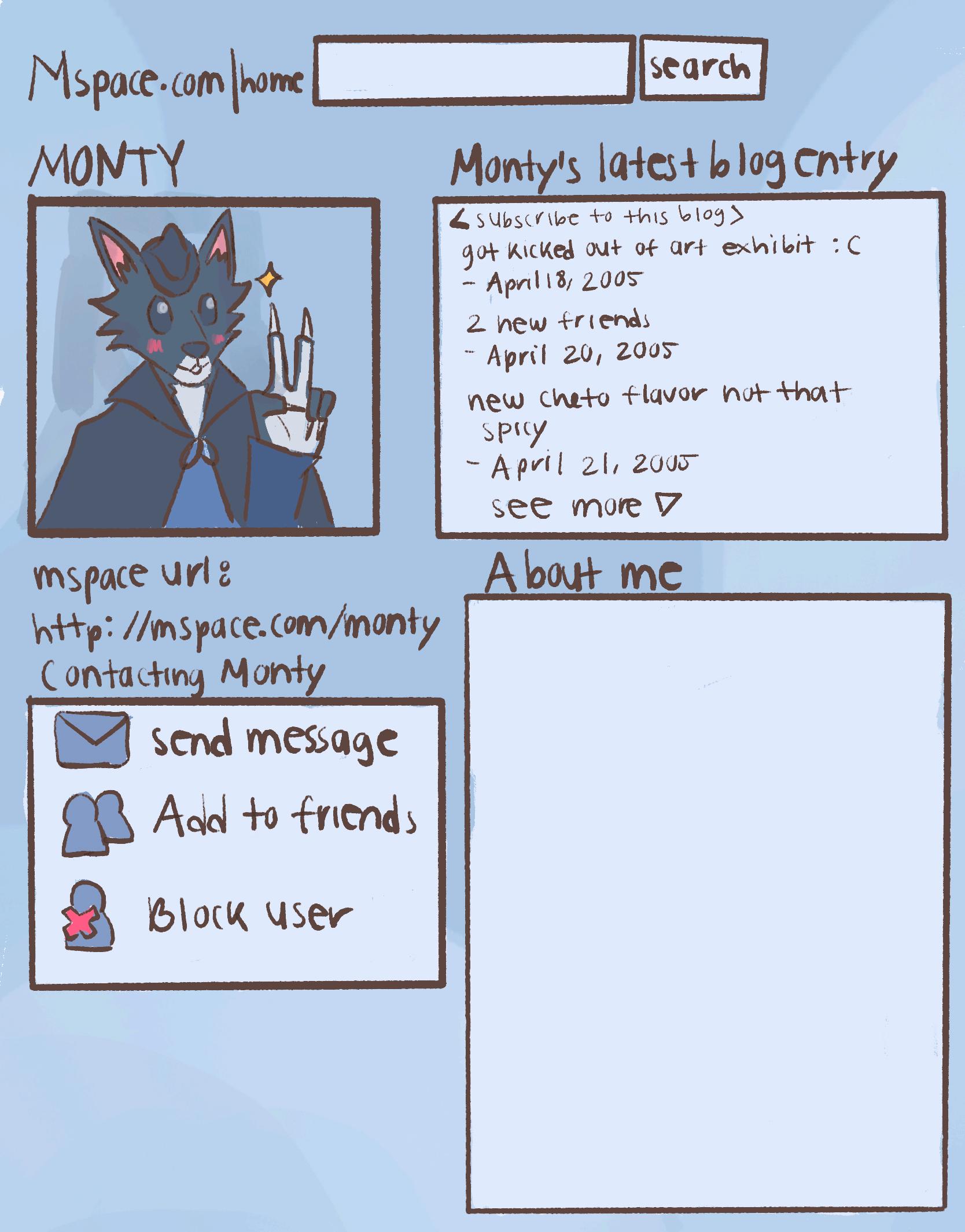
In this day and age, access to convenient and helpful technology is crucial for the new college student. With iMac G3s evolving to Macbook Airs and flip phones being traded out for the newest, flashiest iPhones, navigating a college campus looks different than it has in the past. In this section, stories discussing campus resources and technology hacks will make the transition to the Meramec campus seamless. This section is dedicated to assisting the new student as they take on college: covering classroom locations, tackling the challenge of making friends and exploring the various programs STLCC has to offer. This section is also soundtracked by a nostalgic playlist full of popular hits to welcome in students with a familiar tune– listen on your favorite music streaming app or dig up an old iPod. Continue on to explore the resources and technologies that Meramec has to offer as students enter college and the next stage of their education.
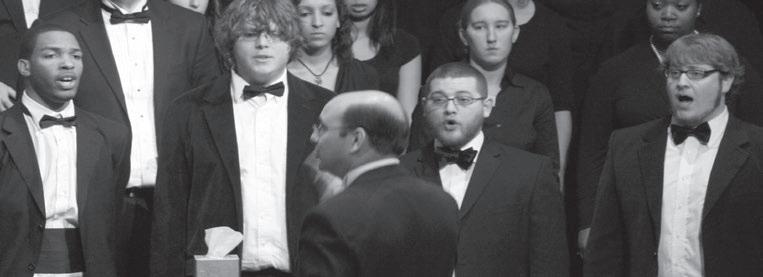

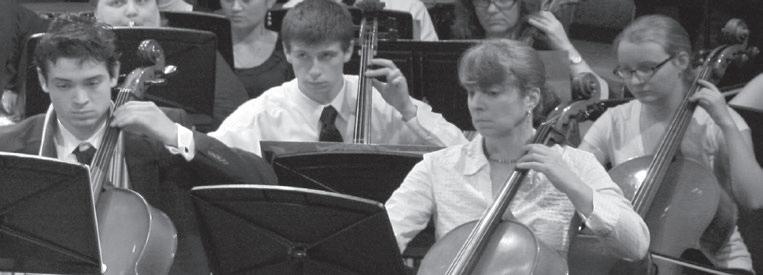


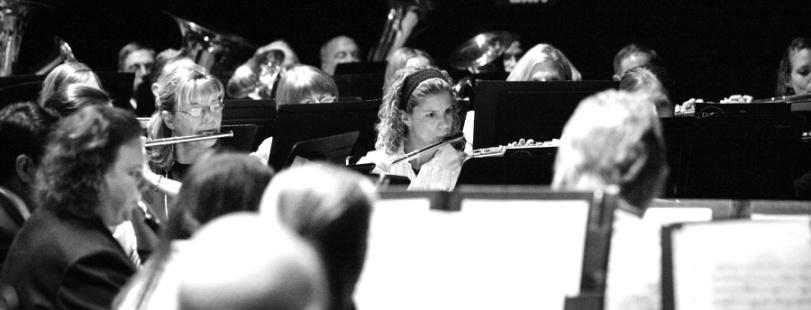

The Music Program at Meramec offers courses and ensembles for all students. Classes are available for general education credit and the Associate in Arts degree with a concentration in Music to prepare for transfer into a Bachelor of Music program.
MUS 101,102,201,202 Music Theory I,II,III,IV
MUS 103 Music Fundamentals
MUS 114 Music Appreciation
MUS 115 Group Voice
MUS 121,122,221,222 Class Piano I,II,III,IV
MUS 128 History of Rock and Roll
MUS 130 Beginning Guitar
MUS 141,142,241,242 Applied Music (Lessons) I,II,III,IV
MUS 150 Fundamentals of Music Technology
MUS 152
Audio Engineering
MUS 154 Music Recording
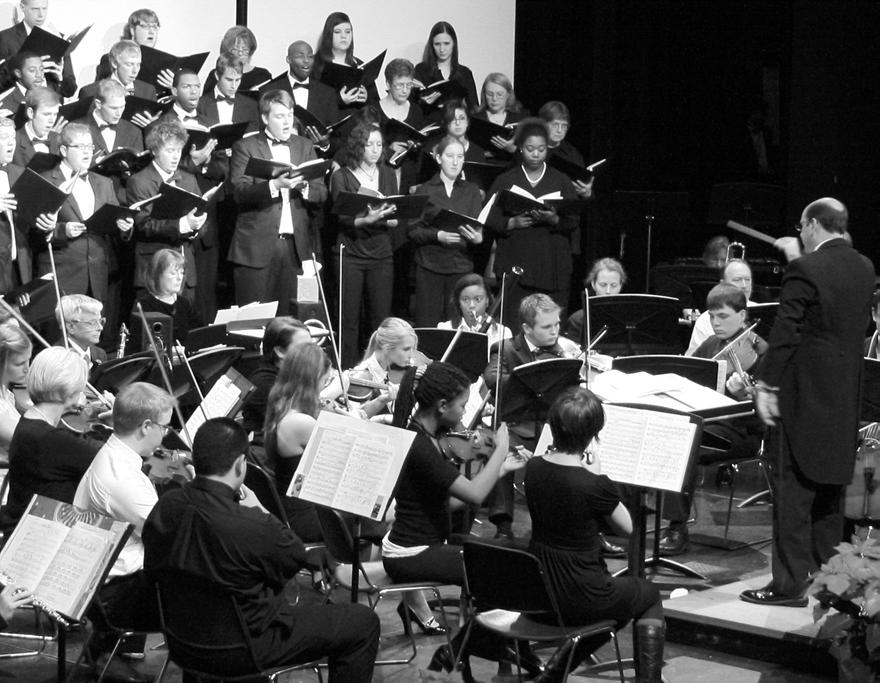

Interested in performing in an ensemble?
All Meramec students may participate. No audition is required!


ENSEMBLES – CORE42GENEDCREDIT!
Music 131 – Concert Choir*
Music 132 – Orchestra
Music 134 – Symphonic Band
Music 138 – Jazz Combos
All ensembles hold a seat/part assignment hearing during the first rehearsal. *Members of the Concert Choir may audition for the Chamber Singers/Jazz Choir
For more information, contact Music at Meramec Dr. Jerry Myers, Program Coordinator, gmyers34@stlcc.edu, (314) 984-7638
Welcome to the STLCC- Meramec! If you are new to STLCC, you have arrived at the end of Phase 1 of the college’s Transformed construction projects, are among the first group to experience the new building on campus, including a brand new, state of the art library and tutoring center, and tons of shiny new classrooms with great views of the campus and community. This Back-To-School guide honors the future of the campus, while taking a look back at the nostalgia of the decade that many of the student body was born in, the 2000’s.
In Section 1, “MyMeramec” you will find information on supplies you may need, and all of the technology that you must be aware of. You’ll find a map of the campus to help you navigate your journey. In addition, you’ll find a guide to making connections at a commuter college, tips on budgeting, a look at Meramec’s “Early College” program, and a playlist to help set the mood.
In Section 2, “MPOP” you’ll find articles that will help you during your time on campus. In addition to a calendar to help guide you through key academic milestones in the fall semester, you’ll find guides to connecting at a commuter college, tips on the best clubs
and organizations to join during your time here, and a look at the hidden corners of campus. In addition, you’ll find more information about ways to take care of your physical and mental health.
In Section 3, “Take a Bow” we’ll help prepare you for the end of your Meramec career. Hopefully, it’s been prolific and full of highlights to add to your personal portfolio. In this section, you’ll find tips on how to curate the best letter of recommendation and see how graduates have grooved their way through Meramec. As a bonus, you’ll find another playlist to refresh your vibe and send you on your way.
Section 4, “What Was On” revisits some of the biggest news stories of the 2024-2025 school year, including a look back at two notable stories involving STLCC Board Chair Kevin MartIn and a former instructors lawsuit against the college, a look back at the “Faces of Meramec” and much more.
The Montage hopes this guide assists you greatly in your journey.
-
Jacob Politte, The Montage Managing Editor Emeritus
Meramec’s two new buildings opened to traffic on Monday, June 2nd after over two years of construction. While some construction and electrical work is still taking place, departments are continuing to move in as this magazine is being finalized for publication. Over the next few months, the campus will continue to “transform” as the Student Center will undergo heavy renovations, while Social Sciences and Clark Hall will be fully cleared out and eventually demolished. With that being said, check out some of what you can expect in the new Financial Services and Enrollment Center and the new Center for Emerging Technology below.
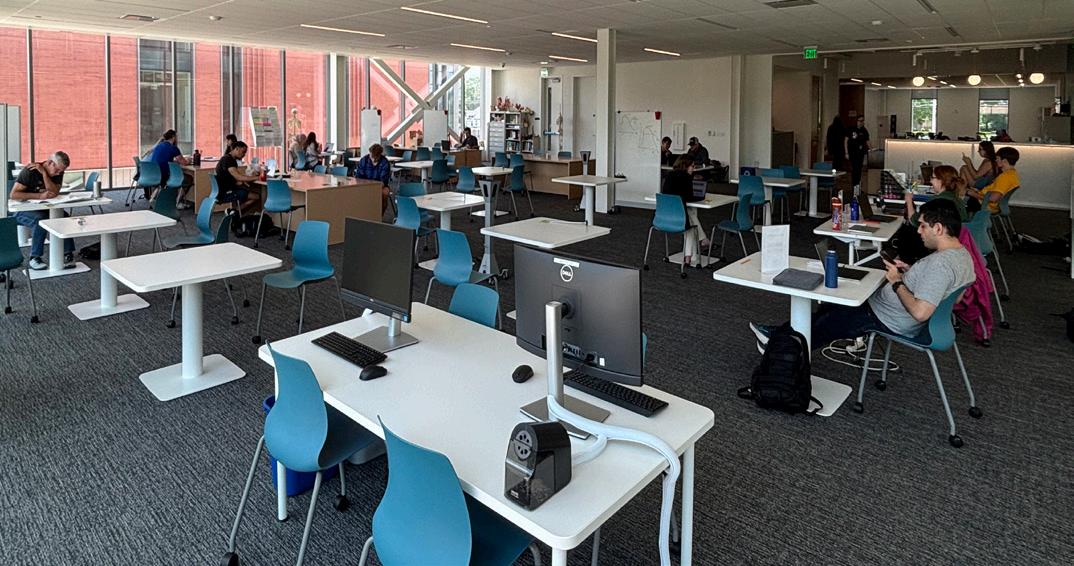

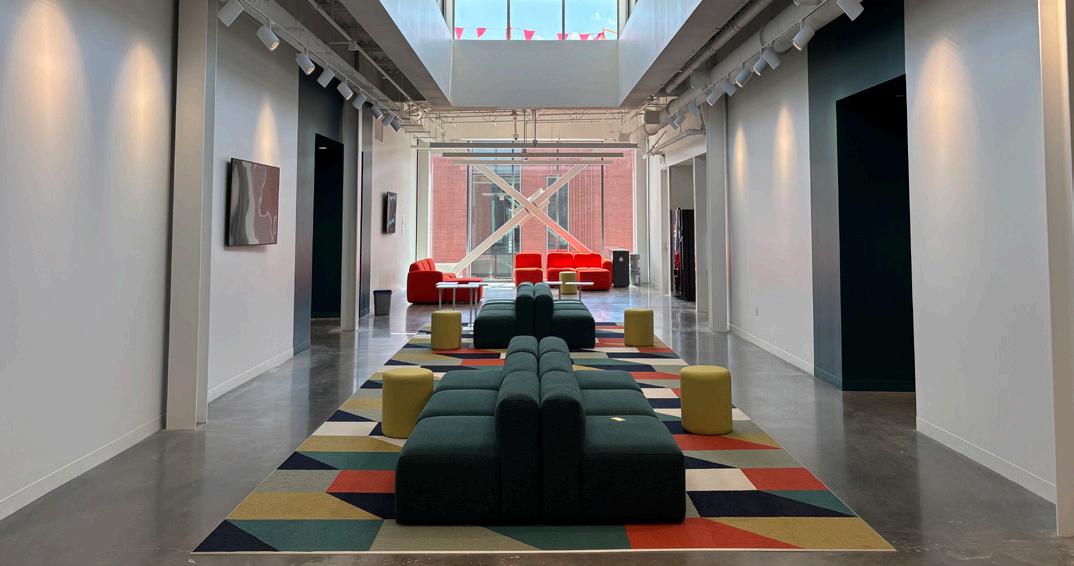
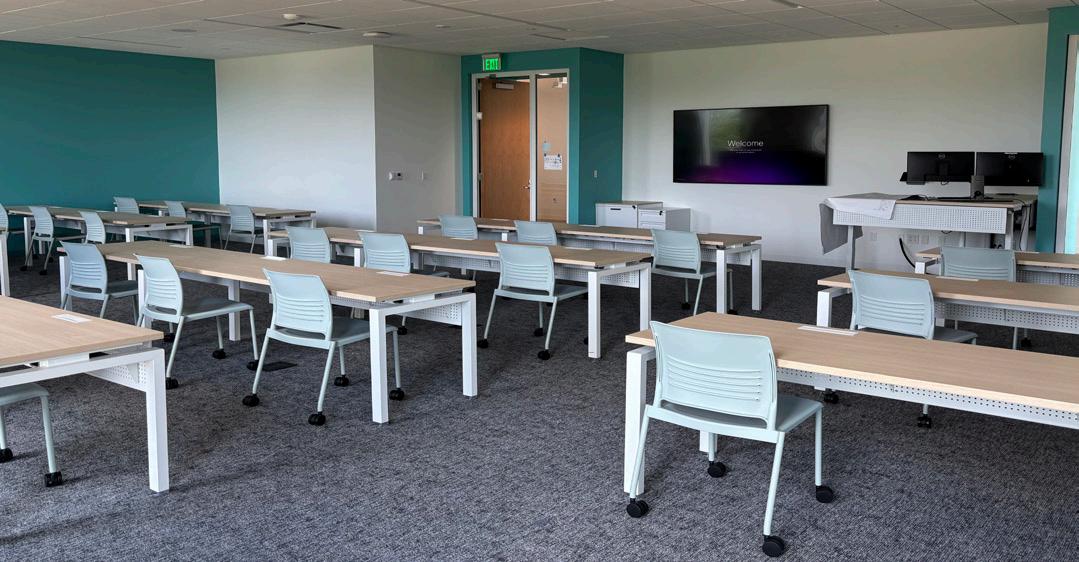
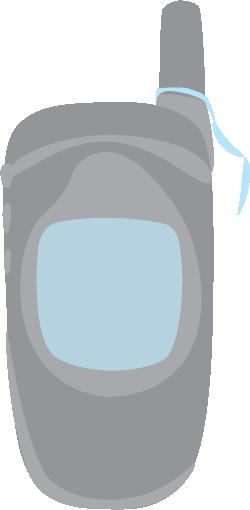
HOW TO NAVIGATE CAMPUS AND FIND YOUR CLASSES:
With the campus being made up of multiple different buildings, finding where your classes take place can seem daunting for first-time students. While it can be intimidating at first, navigating classes will become second nature.
When looking for classes, students first want to pull up Navigate and go to class schedule. Go to the schedule view and select the class you want to find. The location will be listed along with other information such as start and end times, name of instructor, and a brief description of the course. The location will have the name of the building and the room number.
HOW TO ACCESS TUTORING:
The tutoring center is a helpful resource for students. Struggling in a class, want a tutor to look over your work, or just want to review before a test? The tutoring center can offer its services. Located in the new Center for Emerging Technology and open from 8 a.m. to 8 p.m. Monday through Thursday and from 8 a.m. to 4 p.m. on Fridays. Students just need to check in by entering their “A Number” or scanning their student I.D. and choosing which course they are stopping in for. There are a number of different tables with tutors for different subjects and classes. Look at the signs posted at each table to find what course you came for.
The Writing Center is also a part of the Meramec Tutoring Center. Students can schedule a one-on-one meeting with a writing tutor to look over their essay, help brainstorm, or finish writing that tricky conclusion. Appointments can be scheduled through Navigate or by stopping by Room 219 in the Center for Emerging Technology. Just attach your current assignment and leave a note on what areas you would like to focus on with the tutor.
The library offers a lot for students with databases, technology rentals, and a place to sit down and get some work completed during that long break between classes. Librarians are present to help students navigate these resources and answer any questions they may have.
The library databases contain resources that cover topics such as current events, archives of historical newspapers,

and even a digital campus streaming library full of feature-length films. If you find yourself unable to find sources for your English class essay, check out databases such as Academic Search Premier or Issues & Controversies, and search up your topic. You are bound to find a helpful supporting document.

The tutoring center and library resources are not the only free things offered to STLCC students. Multiple clubs and organizations operate on campus, free for any interested students to join. No matter if your interest is chemistry, horticulture, or tabletop role-playing games, you can meet fellow peers that share your passion.
Current students also get access to Microsoft Office 365, which includes Teams, Word, PowerPoint, Excel, Outlook, and OneDrive. These programs are very useful for completing and keeping track of coursework.
Don’t want to pay for a gym membership fee? Students get free access to use the fitness center on campus, location in the gymnasium building. It’s open from 8 a.m. to 4 p.m. on Mondays, Wednesdays, and Fridays and 8 a.m. to 6 p.m. on Tuesdays and Thursdays.
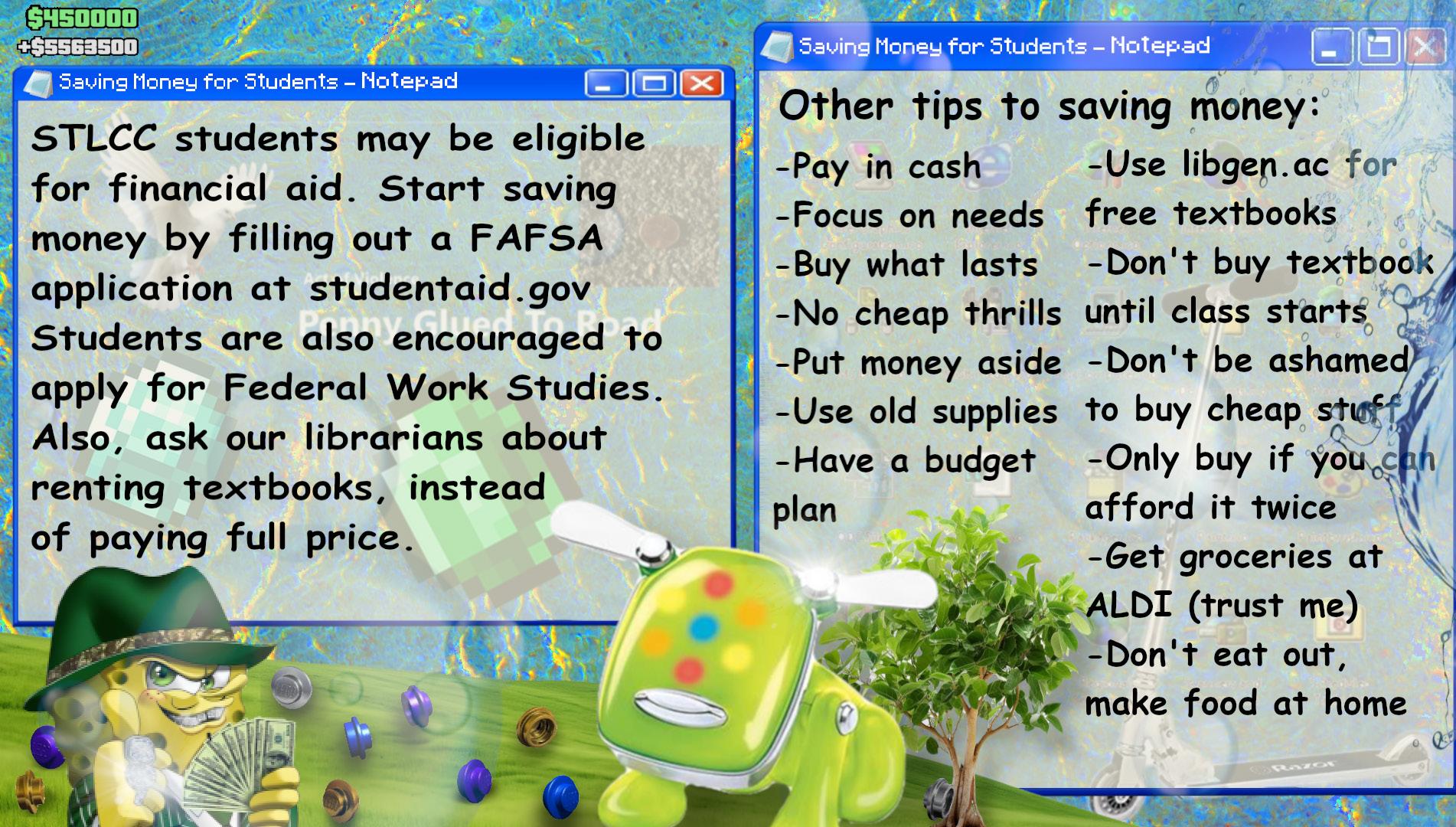
ELIZABETH CLEARY MANAGING EDITOR
In class, in the library, in computer labs and tutoring centers, Early College students take their futures into their own hands and stray from the traditional progression of schooling.
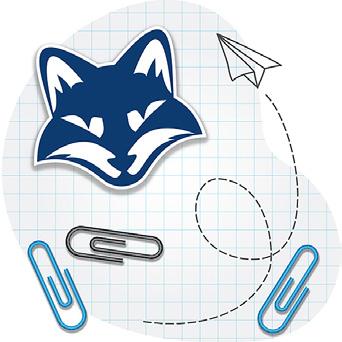
The Early College program at St. Louis Community College (STLCC) allows for high school students to get a headstart on higher education by enrolling fulltime in STLCC classes, earning credits that count both toward their high school diploma and an associate’s degree.
“I wanted to get two years of college done quickly because I want to get a doctorate,” said Kylie Lewis, a May 2025 Early College graduate.
In Lewis’s experience, the professors at STLCC were friendly and were familiar with having Early College students in their classes. She also found that the course load at STLCC was different from that of her high school, but still manageable.
“If I had continued taking classes at my high school, I would’ve taken seven APs in one year– not a good idea,” Lewis said before laughing. “Early College stopped me from doing that and made my course load more reasonable, but also challenging enough to keep me engaged.”
Lewis said that the Early College program provided her with the opportunity to create her own class schedule, work more hours outside of school, and enjoy her free time.
“Honestly, the naps throughout the day have been really great. I really enjoyed my naps,” Lewis said with a smile. One reason why the Early College program appeals to many high school students is that some school districts will cover part or all of the tuition costs, allowing students to get a free, or at least cheaper, college education.
“I saw the opportunity to further my education quicker for cheaper, so I took it,” said Hannah Castaldi, another May 2025 Early College graduate. Castaldi said that the skill sets she learned at STLCC were different from high school. She felt there was an increased level of independence and a development of time management skills.
“I faced a learning curve of how to be on my own and of having to go to my professors as opposed to having my parents speak on behalf,” Castaldi said. Castaldi was also intent on participating in the Early College program as a means of finding a larger network outside of her high school.
“The community you build at college is a lot different than high school, and I think those people will stick with you for longer,” Castaldi said. “I made a lot of friends in the same program that I’m doing, and I just feel like I’m set with really good people in my life because of the program.”



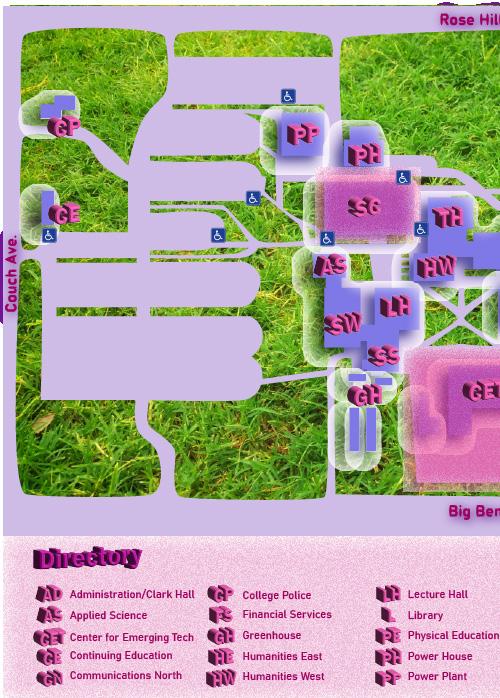


*DISCLAIMER: Locations of some departments, including Campus Police and Continuing Education, will change during the upcoming school year. Stay tuned to https://stlcc.edu/transformed/ for updates.

JACOB POLITTE
ONLINE EDITOR
With technology advancing in our sleep, STLCC is trying to advance its way into the future by upgrading our systems. Yeah, there are some systems that could use a major upgrade, like Banner. The IT department here is working hard behind the scenes to make it a better experience for all types of upcoming students.
One of the things that students can take advantage of is the free student Wi-Fi. When logging into the Wifi on any campus, students have a choice between multiple networks: STLCC, STLCC-Personal, STLCC-Encrypted, and STLCC-Mobile, STLCC-Instructional, and STLCC-Guest. It is recommended by the IT department that all personal devices should connect to the STLCC-Personal network. Depending on your device, it may automatically fill in the required settings for the network. If it does not (like if you have a Chromebook) you may contact the STLCC IT Help Desk and an agent will be happy to help you.
In addition, students have access to print either in either black and white, or color pages for any means in the campus libraries. You can print up to 20 pages per session.
Since STLCC now uses Microsoft as the back end for a lot of our applications, Students can take advantage of Microsoft CoPilot, which is Microsoft’s AI. There are some ways that students can take advantage of this emerging technology, but you have to remember to use it responsibly. Some ways students can use it responsibly is to find sources for your research paper, have it explain how to write in APA style, and even use it to give you some ideas for a paper.
While on the topic of moving back end services to Microsoft, Banner Self Service is a page that must be visited by every STLCC student at some point, but it can be a bit tricky to navigate if you’ve never used it before. “Banner” is where

all of your STLCC information is stored for your convenience. On Banner, you can sign up for classes, check your grades and your transcripts, and either set up a payment plan to pay for your classes or just pay for them outright.
Banner is used by both students and faculty college-wide. In particular, your official final grades for each semester are uploaded exclusively on Banner; you’ll have to access the site and view your transcript to see how you ultimately did.
When signing up for your future classes, Banner also has an interactive class schedule that helps you search for the classes you’re looking for. You can use this interactive feature to search for the classes by professor, campus, time period, or the type of class (online, independent study, or in-person).
If you’re looking to address how to pay for your classes, on Banner, you can either set up a payment plan that is the best fit for your financial situation, or you can pay for your classes outright.
IAN SCHRAUTH STAFF
Canvas is your online classroom, for lack of a better term. There, your professors will attach a copy of the course syllabus and the tentative schedule for the course on the course’s page. Your instructor may also post discussion board topics that are mandatory to respond to. Other online assignments can also be found here.
Another Microsoft program already in use by STLCC is your student “Outlook” email account, which was created the moment you signed up for classes. It may be tempting to ignore it, but don’t… vital college information is sent through this particular channel, and it arrives frequently. This includes updates from your Professors about class cancellations or schedule changes, in addition to important messages from members of the college’s administration, the Campus President and other department heads.
For more important information on the technology services that STLCC offers, please contact the STLCC IT Help Desk at helpdesk@stlcc.edu, or through their Web Request Portal.
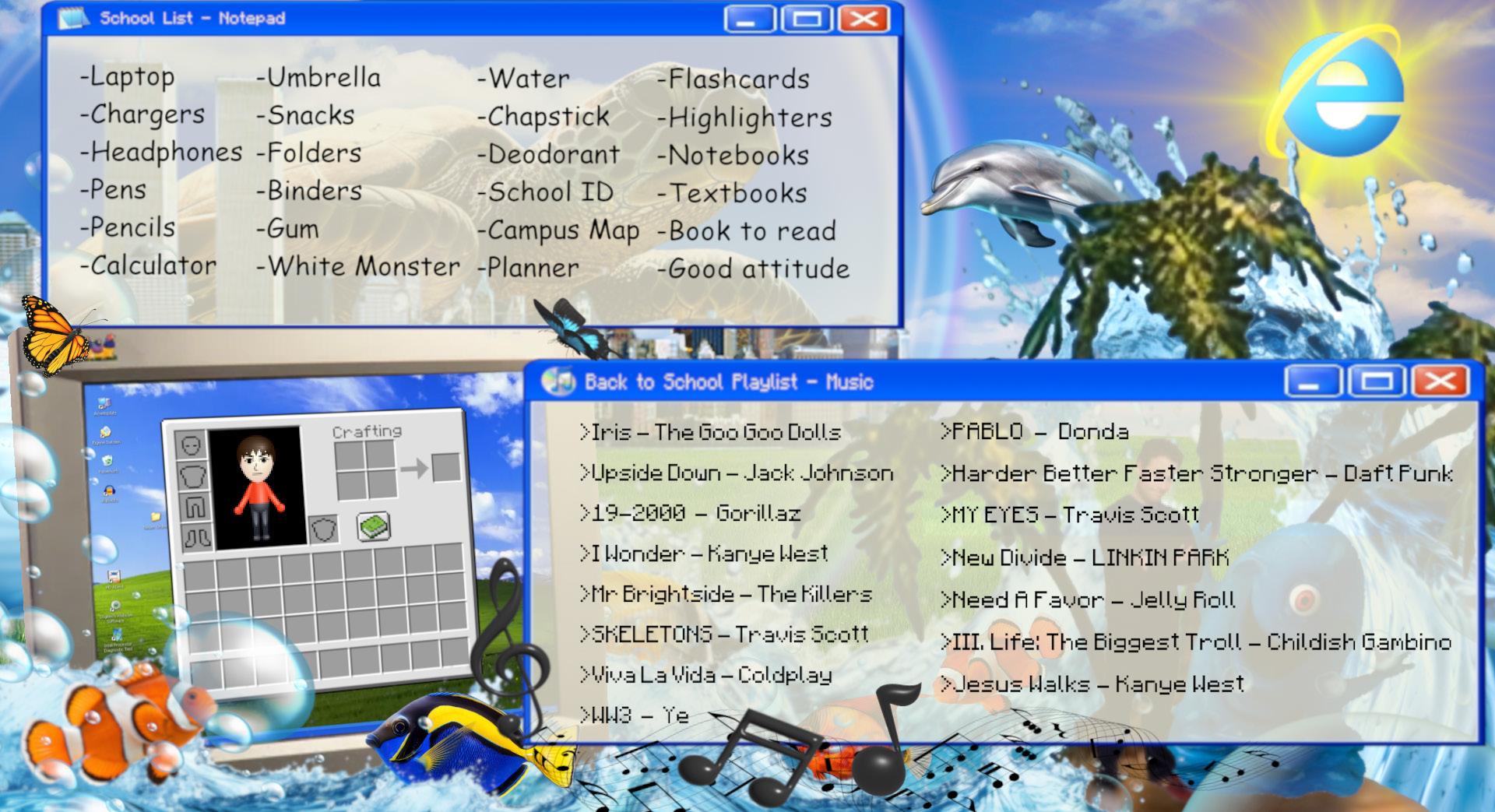

Throw on your favorite low-rise jeans and baby tee and bask in the “fetch” fashion of the 2000s as the next section covers comfortable Meramec study spots, ways to get involved on campus and more resources available to the new student. Students will have a chance to meet some of the professors on campus as they share their voices and experience at STLCC. Similar to the bright and bold Y2K fashion trends, this section highlights exciting clubs and leadership opportunities that make campus life fun and engaging. Students will also explore mental health resources in this section that are sure to take some of the stress out of the transition to college and leave them feeling confident and supported. Discover your own distinct style as you turn the page and see which aspects of Meramec best suit you.
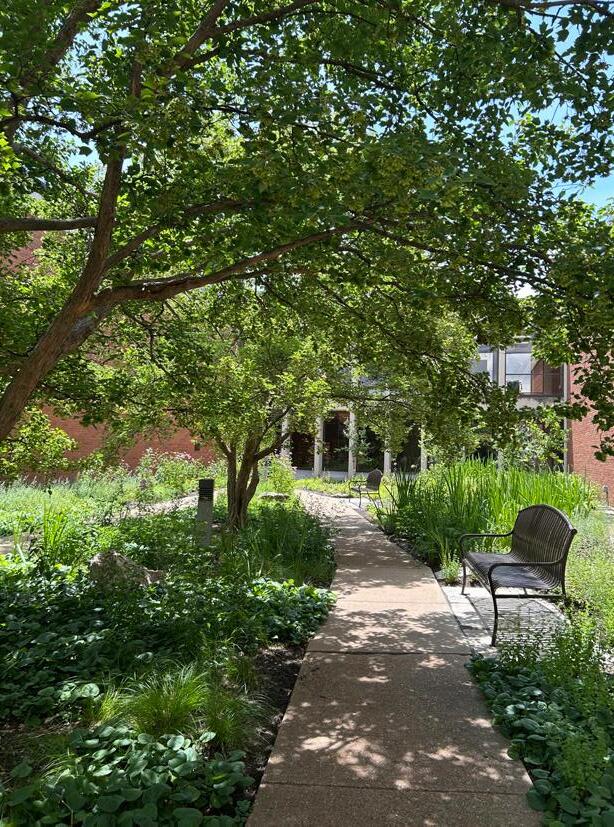
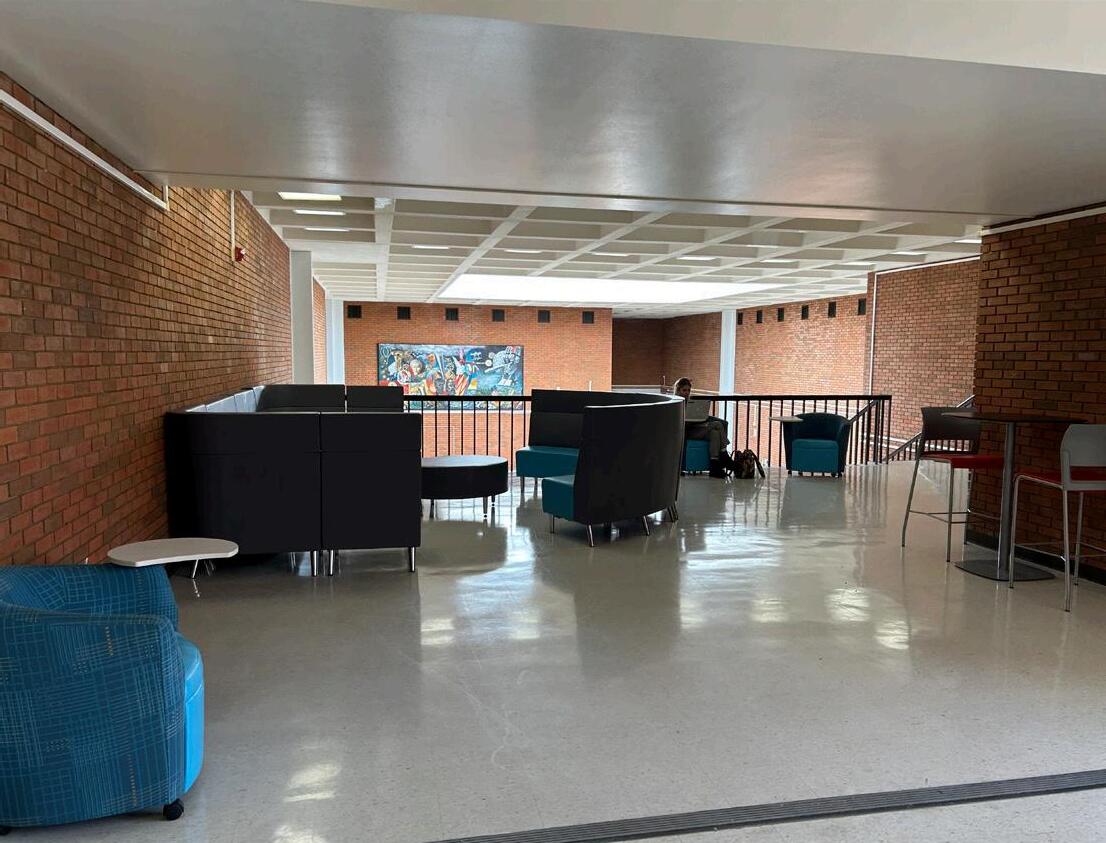
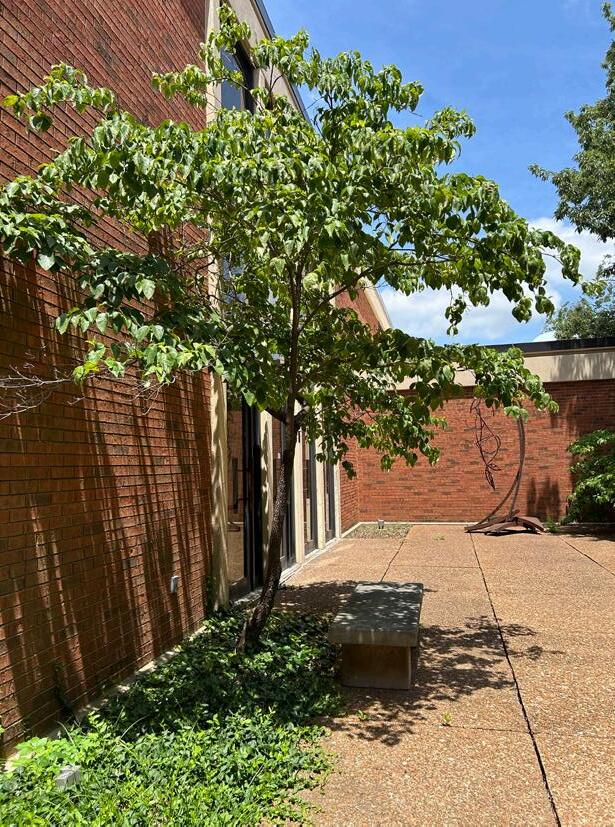
Throughout a fairly large campus like Meramec, there are tons of secret spots, lowtraffic areas and hidden gems. Many popular spaces get overcrowded, overused or picked over, and it can be hard to find a place to study or find some peace and quiet. For new and returning students, insight on the secret, special things on campus can be helpful and rewarding; so here are a few places and resources that might be overlooked, but can actually provide a lot for the students of Meramec.
When it comes to buildings, some are much more popular and busy than others. The building that tends to be the quietest and least populated is usually the Humanities Building. The classes held there are often pretty niche and major-specific, so the traffic inside is pretty low. It is also toward the back of campus and not the nearest building to any parking lot, so it’s not usually a goto study spot, which makes it perfect for students looking for some alone time or peace and quiet to get work done.
On the topic of study spots, something not everyone might know is that in almost every

building, there is a room that is a dedicated “study room” for a few hours of each day. There are often signs posted that dictate which hours of which days a week the time is allocated. There are also many common areas with tables and whiteboards that are marked for students of specific classes and subjects to get together and help each other study. This can be extremely useful to stimulate productivity for those easily distracted and help people congregate with others taking similar classes.
Another great spot is the top level of the Lecture Hall. It gives the Community College a university feel and has the perfect study vibes. There are all kinds of seating ranging from tables to booths to high seating, and it isn’t usually crowded. There are also more vending machines up there with different selections.
Gearing away from study spots and towards useful resources, the Student Advocacy and Resource Center (SARC), currently located in Clark Hall but soon to be located in the Student Center, has useful tools for every student on campus. Although many probably know about it, few people realize all of the things they can help with. Aside from obvious help with learning and physical disabilities, they are able to help students with things like
food and access to food from the school cafeteria, business clothes and so much more.
The Writing and Tutoring Centers, located in the Center for Emerging Technology (CFET), are also great for providing free services and they offer tons of availability for appointments and walk-ins. They can help with major assignments, studying for tests, long essays or even short discussion questions. There is no reason not to get a paper checked over by a second opinion here.
The STLCC Library, also located in the CFET, also houses computers and printers for public use. Whether a student forgot their laptop at home, doesn’t have one, their computer died or they just need to print something for free, the library has them covered.
One final thing that is a campus treasure is all of the greenery and garden spaces that Meramec has. Whether it’s where the Lecture Hall and the science buildings meet, tucked behind the Humanities Building or the pathway near the west parking lot, there are tons of green spaces and gardens. Hopefully, as students take on this next academic year, these spaces and resources can be of use to facilitate a great school year.
RYAN WINZEN NEWS EDITOR EMERITUS
Clubs, organizations and volunteer opportunities are a great way to get involved on campus and help to make school more than just going to class and doing homework. Students can meet peers that share their same passions and interests and gain new skills by participating in activities.
Clubs are based around certain subjects and interests students may have. These clubs may focus on discussion, engaging in the interest, or running events on campus. If you find a club that you are interested in joining, send an email to the president or advisor about getting the information.
Campus Life Director Sean Cooney talked about the different types of clubs and organizations that operate on the campus.
“On average, each year there are 20 student organizations. They range from directly affiliated with programs and majors to being extracircular,” Cooney said. “There’s the Campus Activity Board, SGA, Crochet Club, [and] D&D club. There are a variety of clubs for students to get experience and network.”
Cooney also mentioned how students can create their own club. “Any student is welcome to create a club. They have to find an advisor and at least five students. The process changes every year, so we recommend coming to Campus Life first,” Cooney said.
There are many ways for students to get the word out about a new or existing club. “Flyers still work. We have a campus expo in the second week of each semester. Word of mouth. Even with social media, classic ways work well,” Cooney said.
Cooney talked about the Student Government Association, which is managed by Campus Life.
“Student Government is directly managed by Campus Life, but we mainly guide them. It is mainly student-led,” Cooney said. “They can carve their own path. The most recent board focused on philanthropy. They are the voice of the campus.”
Participating in activities can benefit students in all aspects of school. “There are studies done that show students who are involved in clubs are more involved in the classroom and more likely to graduate,” said Cooney.
Campus activities can also simulate how jobs after college will operate and teach students how to work with other members of a team.

“The biggest benefit is problem solving,” he said. “Many of us will go into fields where we have to work with people on solving different problems. When you go to the job market, you already know how to work with people.”
Activities on campus provide numerous benefits and skills to Meramec students that will help them after their college career. “There are opportunities to gain actual skill sets. Meeting other people in your field, meeting your professors: those will lead to job opportunities or transfer opportunities,” Cooney said.
The following are some of the clubs that were offered during the 2024-2025 school year:
• American Chemical Society
• Black Student Union
• Crochet Club
• Engineering Club
• Interior Designers of Meramec
• Music Club
• Muslim Student Association (MSA)
• Pride Alliance
• Sky Club
• Tabletop Roleplaying Club
The club expo will occur on Sept. 2 and 3 on the Student Center Quad.

GRETA MCGLAWN GRAPHIC DESIGN EDITOR
One of the coolest things about community college is the community. There are hardworking highschoolers, students exploring pathways to find out what they want to pursue, older people taking classes during retirement, and all other kinds of unique stories and backgrounds. While the community is rich and diverse, finding your place within the community can seem daunting. Whether it’s your first year or you’ve been at Meramec but never had the time to join any clubs, find a club that suits your interests.
First, let’s discuss the challenges that commuter campuses can have that prevent students from making connections. Since students don’t live on campus, many students are only at Meramec to stay for class, study, and maybe grab lunch. There are also students who take online courses which take away even more on-campus time. Additionally, a large number of students work jobs alongside school, making their free time limited. For many students, it may seem like the extra time spent at a club will not be worth it, but if you find a space where you can enjoy your interests with others who also enjoy it, then it will make your few- or many- years at Meramec just a little bit better.

sure to make time for it when I officially joined in the Fall.”
The crochet club gave some inspiring responses to how joining a club has impacted their lives. Jessie the Club Vice President said, “It was super cool to see the club grow over the past year and a half. I’m proud to know that I took part in starting this club and it has opened me up to so many new experiences along the way.” The current President, Moth said, “In Spring of 2024, I saw the booth at Campus Expo. I knew I had to join, but I was incredibly overworked and burnt out.
Class made it hard to find time, so I made

Clubs are beneficial to more than just the people involved. Clubs are spaces where thoughts develop and become actions. If no one is joining clubs and no one’s mentoring them, then how are communities supposed to grow? Great things can come from small clubs or big ones. Even small clubs- with more than 5 people- can request money from the school to connect their members to larger opportunities within their field and grow their club. The relationships clubs can foster are important for professionals in those fields to be supporting and encouraging because the younger students are the ones continuing these interests.
In an interview with Professor Sahar Joakim Resch Ph.D., she described her experience with clubs at a large 4-year college and how that compares to clubs at a community college. Dr. Resch is the faculty advisor for the Meramec Socratic Society. She not only has been a member of clubs but also has experience organizing club events. She told a story about when she attended UCLA and was a part of their Philosophy club, “At
UCLA, me and two friends organized the first ever undergraduate philosophy conference. It was so cool! No faculty came except the faculty adviser for the philosophy club- and I think he only wanted to see what he funded. Basically, on one hand that tells you the students were not taken seriously, but on the other hand they said, okay, sure, here’s money. But at STLCC, faculty care and show up to student events.” While not every 4-year may have uninterested teachers, Meramec is filled with professors who care about not only the subject they’re teaching but also the students taking their classes. Reaching out to your professor or a professor who mentors a club is a great way to get involved with events and opportunities within your interests.
On that note, Dr. Resch discussed the importance of clubs and supporting students by supporting clubs. “Just because you’re going to community college doesn’t mean that you don’t know what you want to do and just because you’re at the 4 year, it doesn’t mean you know what you want to do, so I think all students should be taken equally as seriously, and there should be funding for supporting the students if they want to put their work on display.” She further explains that it is not only about the funding, but “faculty should also be showing up to student events to cheer them on” at events and showcases. “At STLCC, Campus Life offers students funding to support student clubs, and it’s a great way to make friendships outside of class.”
LINDSEY UNNERSTALL SPORTS EDITOR
One of the most important parts of a student’s experience at Meramec will by far be their professors. At Meramec, these individuals foster the learning of all the students on campus and play some of the biggest roles in a student’s college journey. Here is some insight from a few of Meramec’s very own; Communications Professor David Tatum, Psychology Professor Dr. Leah Schultz and Communications Professor Dr. Christopher Smejkal.
Professor Tatum has been teaching at Meramec for 3.5 years and teaches Oral Communication, Public Speaking, and Communication Between Cultures. After getting his Master of Communications, he was unsure of what he was going to do, but he started teaching communications and really enjoyed it.
Dr. Schultz has been teaching at Meramec for three years and teaches General Psychology and Human Growth and Development. She also taught at Washington University’s continuing education program, where she taught incarcerated individuals.
Dr. Smejkal has been teaching at Meramec since 2001 and teaches Oral Communication, Interpersonal Communication, Public Speaking, and Gender Communication. He started at Meramec as an adjunct professor teaching nights and weekends while also coowning a home improvement business.
Q: What’s the best/most rewarding thing about teaching?
Tatum: “I like the interactions with students, the chance to be creative. It’s nice to get to start again every four months. I get to succeed on a regular basis.”
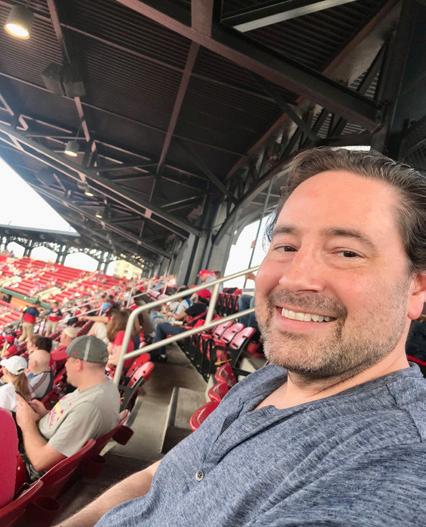
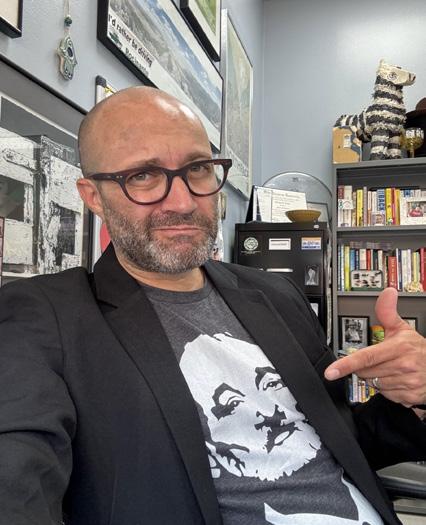

Smejkal: “The students, hands down. I always tell them that I probably learn just as much from them as they do from me. I always love the diversity of people’s lives and the stories they come to class with.”
Schultz: “What I love most about teaching is that no day is ever the same. I get to meet so many different people, and my students are constantly teaching me… I love that teaching gives all of us a new, fresh way to think about the world, and the world gets a little bit bigger.”
Q: What made you want to be a college professor?
Tatum: “Mike Montgomery. He was a great teacher and I kind of became interested in teaching because he loved it so much. He said he could have worked at the Associated Press and made a lot more money, but he liked interacting with students where he was at more.”
Smejkal: “As soon as I got into the classroom, I realized I had the energy for it, and I wanted to do it all the time.”
Schultz: “What made me excited about psychology was not so much doing the research myself, but sharing the knowledge and getting other people excited about it too. I love that this is a common space for people
to share diverse perspectives with each other. I think that’s a really unique thing we have at community college.”
Q: What advice would you give to students starting at Meramec?
Tatum: “Attend class. The most important thing in getting a good grade is showing up. You’re halfway home if you just always come to class.”
Smejkal: “Embrace being in college. Do something that is outside your comfort zone. Don’t just come to class and go home. Join an organization, go see a play or musical, take a class that sounds interesting even if it’s not in your major, because college is going to go extremely fast, and if there’s one guarantee I know it’s that you’ll miss it and you’ll want to be back.”
Schultz: “Don’t be afraid to ask questions. Don’t worry if your path is more winding than you expected. There are many paths to get where you need to be and sometimes it takes a lot of different tries and a lot of twists and turns.”

FIRST DAY OF CLASSES FOR FALL SEMESTER
FIRST DAY OF CLASSES FOR SPRING SEMESTER
FIRST DAY OF 2ND 8 WEEK CLASSES FOR FALL SEMESTER
SPRING BREAK,COLLEGE CLOSED
WITHDRAWAL DEADLINE FOR FULL SEMESTER CLASSES
THANKSGIVING BREAK, COLLEGE CLOSED
FIRST DAY OF 2ND 8 WEEK CLASSES FOR SPRING SEMESTER
WITHDRAWAL DEADLINE FOR FULL SEMESTER CLASSES
EXAMS FOR FALL 2025 SEMESTER
The Meramec Fitness Center is free for students, staff and faculty, conveniently located on the bottom floor of the PE Building. Before using the equipment, participants need to register for and undergo a few brief training modules. Registration for these modules can be accessed through the college’s website or at the fitness center.
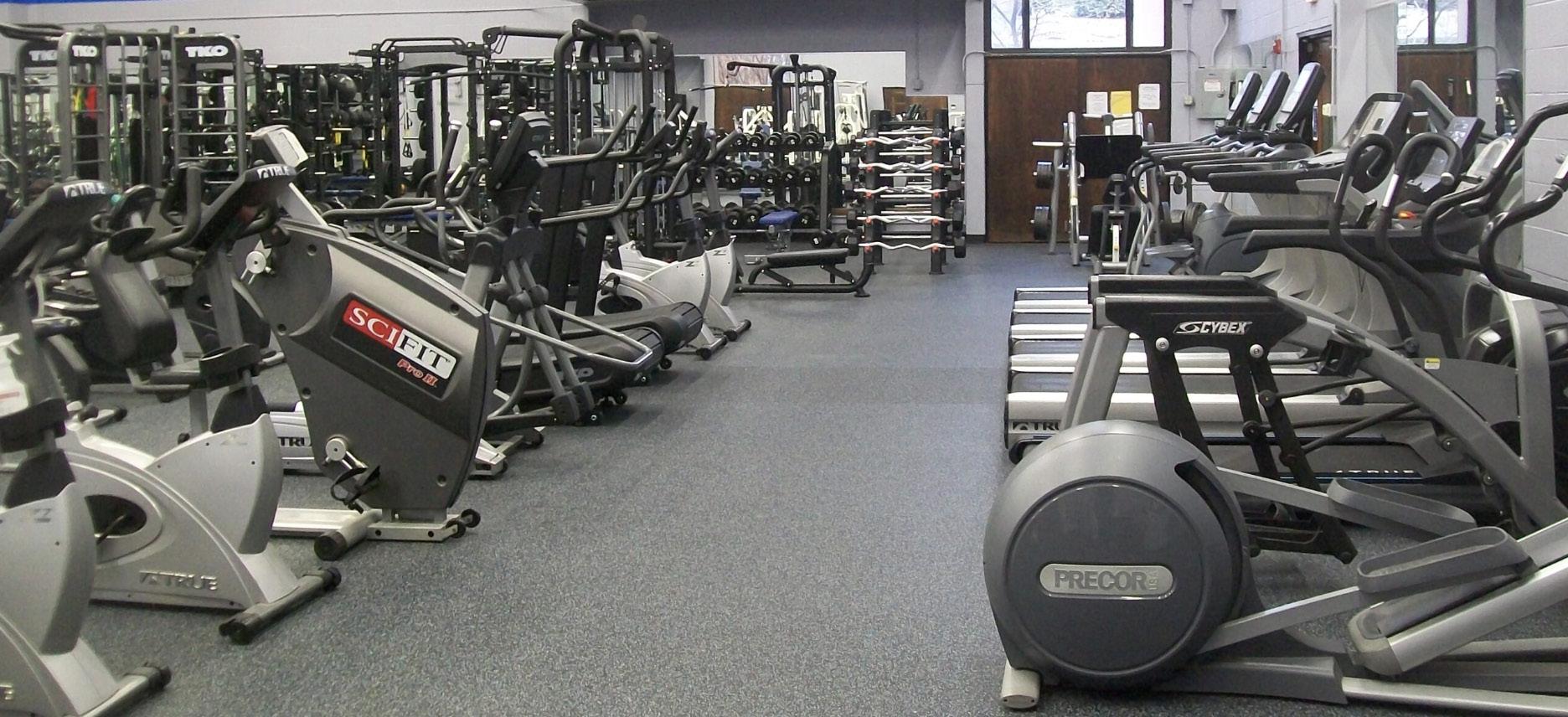

Fall Publication Dates
Sept. 4, 2025
Oct. 2, 2025
Nov. 6, 2025
Dec. 4, 2025

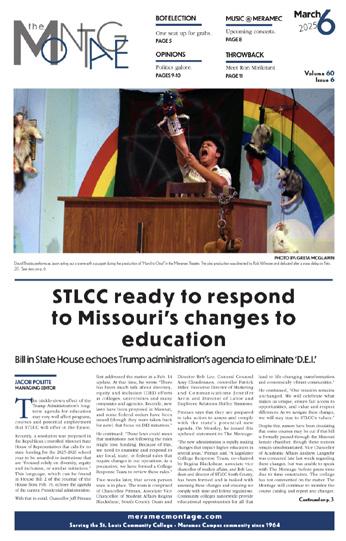


Spring Publication Dates
Feb. 5, 2026
March 5, 2026
April 2, 2026
May 7, 2026
Email ssanders147@stlcc.edu to reserve a spot.
JACOB POLITTE ONLINE EDITOR
Meramec’s Counseling Offices are on the move. Beginning later this school year, they can be found on the second floor of the Student Center; in the meantime, they’ll remain in their longstanding offices located on the second floor of Clark Hall, in Room AD249.
The Counseling Department offers free services and three different counselors (Holly Basom, Amanda Emmons and Troy Hansen) to help students in need. If you’re feeling stressed and anxious, depressed, or have other issues to address, they’re available for students to talk to and can provide countless resources to help those in need address it.
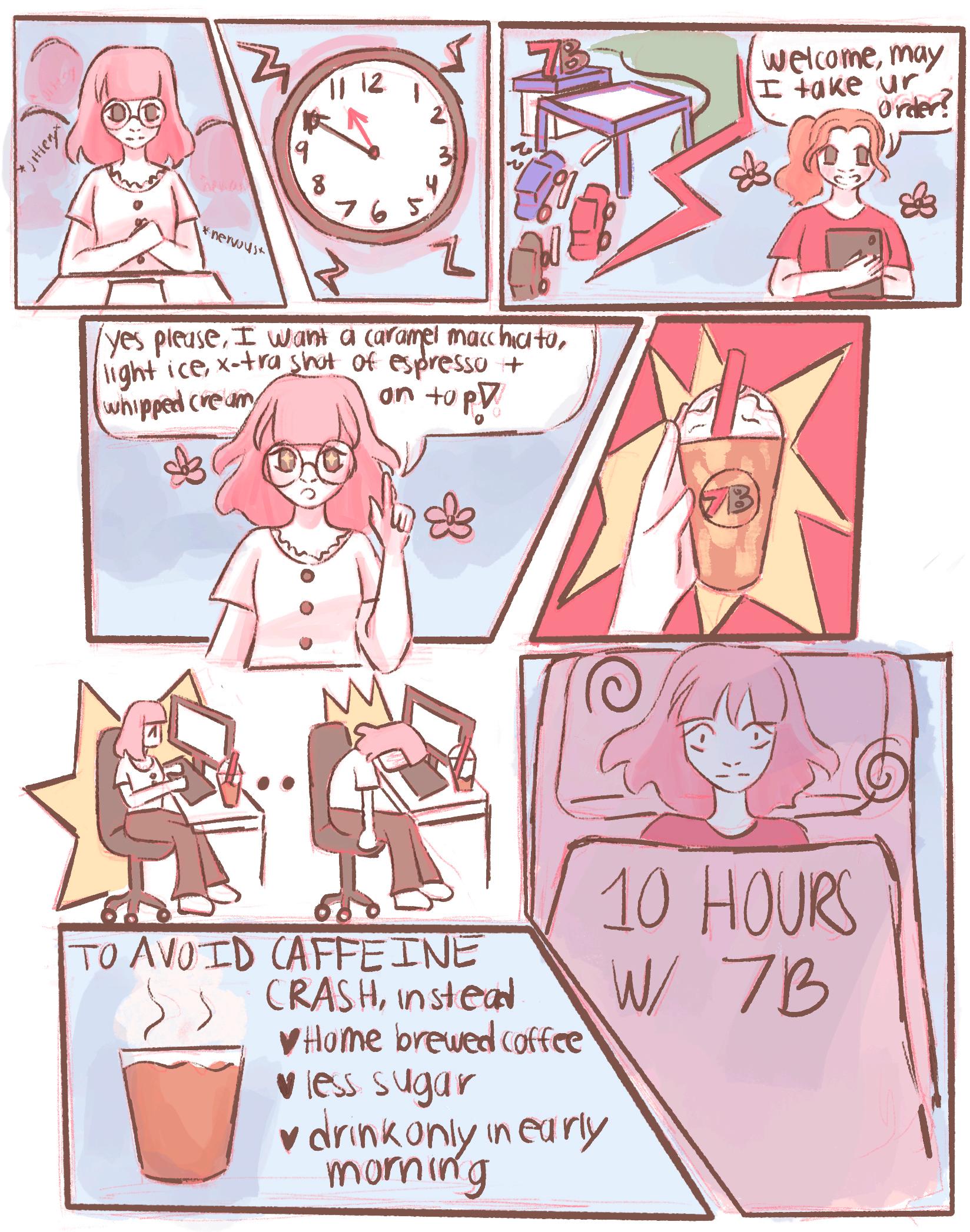
With that being said, appointments must be made to do so. Appointments can be made by emailing counseling@stlcc.edu or by calling 314-539-5151. The Meramec office’s normal hours of operation are from 8 a.m.-6 p.m. on Monday, 8 a.m.-4:30 p.m. on Tuesday through Thursday, and 9 a.m.-4:30 p.m. on Friday. Evening appointments, when necessary, may be available by request.
The STLCC Counseling webpage offers links to additional external resources as well. That webpage can be accessed by scanning the QR code above. In addition, the college’s counseling centers also have a separate page for students seeking off-campus mental health resources. This includes a short guide on how to select a therapist that fits your needs, and a guide for checking if your insurance covers their services. They also link to resources that can be obtained at no cost if you do not have insurance. A QR code linking to that page can be found below.

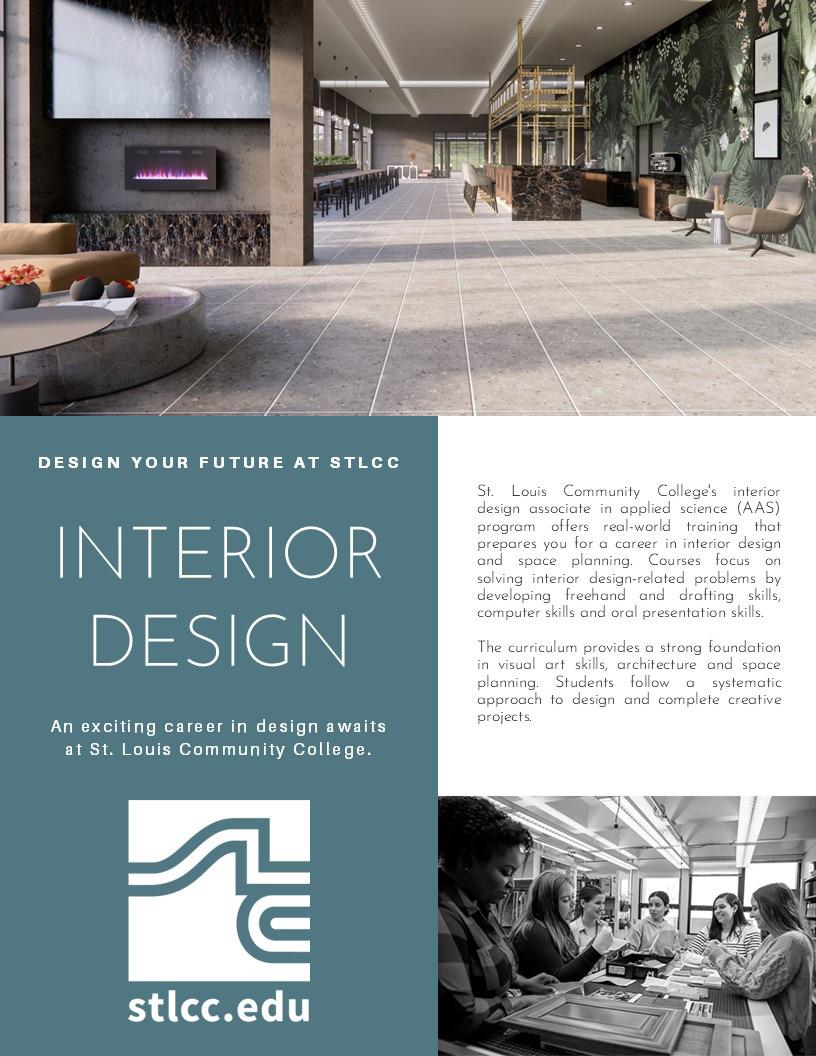
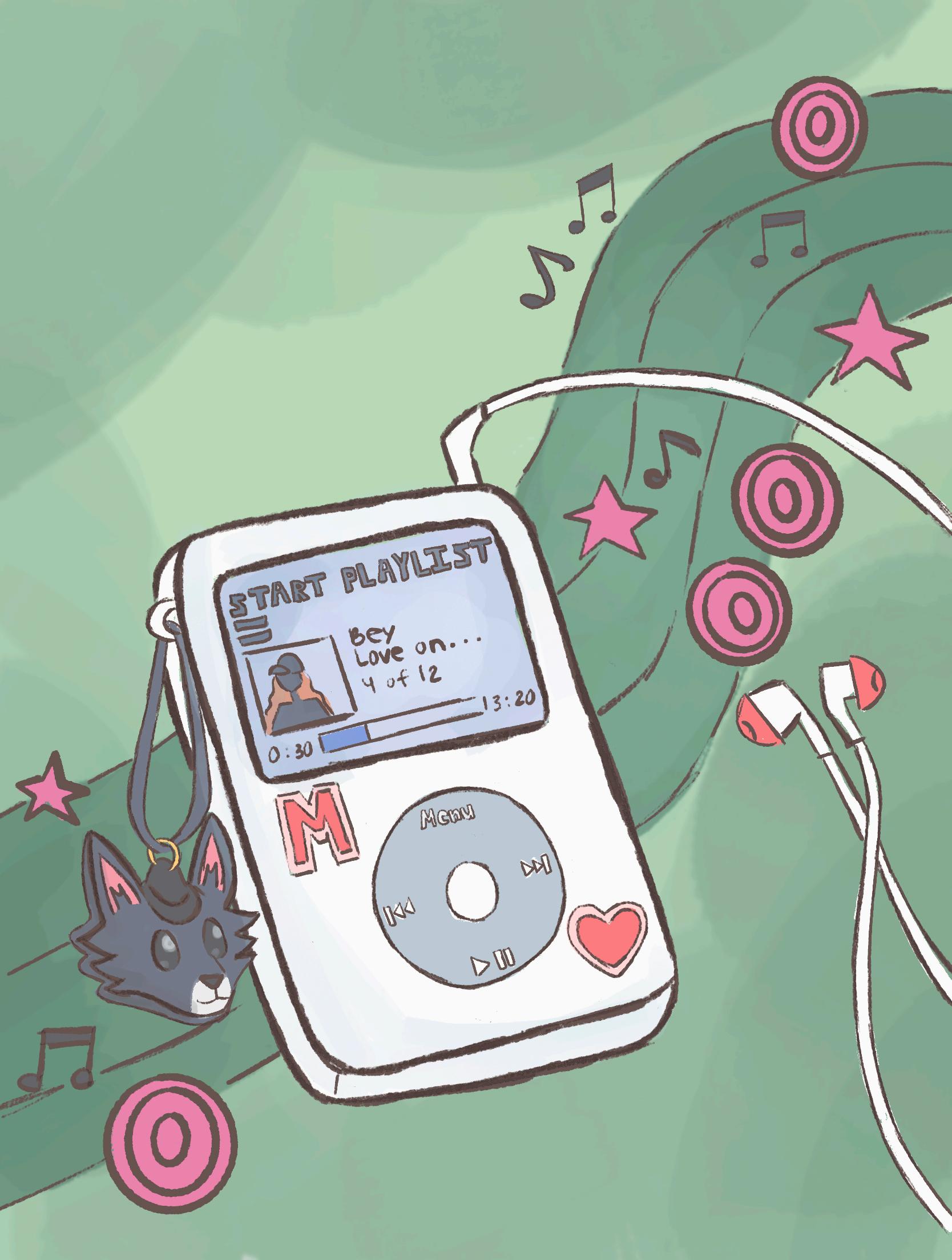
Soundtrack this next section with nostalgic hip-hop and garage rock as you ready yourself to move on from Meramec. Articles on transfer myths and advice from STLCC students who have been accepted into four year universities will help students prepare to leave campus confident in their futures. Similar to the futuristic sounds of music in the 2000s, students too will prepare themselves for their futures with advice on how to ask for recommendation letters. Students can say goodbye to their Meramec years, leaving with fond memories and a strong foundation. Turn the music up and start planning for post-STLCC.
THE MONTAGE STAFF
Two-year colleges are often praised for their affordability and accessibility, but what many overlook are the subtle, powerful skills students develop during their time there. Beyond textbooks and classroom lectures, community college students gain real-world abilities that often go unrecognized—but prove invaluable in both professional and personal settings.
One of the most important hidden skills is time management. Many students juggle coursework with jobs, family obligations or commutes, forcing them to balance responsibilities with efficiency. This level of discipline often rivals that of professionals already in the workforce.
Another key skill is adaptability. Twoyear colleges are diverse and dynamic, exposing students to a wide range of ages, cultures and learning styles. Navigating this

environment builds communication skills and empathy—traits that are highly sought after by employers but rarely taught outright.
Resourcefulness also emerges naturally. With fewer on-campus resources compared to large universities, students quickly learn to advocate for themselves, seek out help and solve problems independently. From navigating financial aid to managing transfer applications, community college students become self-starters.
Perhaps most overlooked is the development of confidence. Starting at a two-year college and progressing toward a four-year university—or straight into a career—helps students discover their voice, their goals and their ability to grow through determination.
So while associate degrees and certificates are tangible achievements, do not underestimate the intangible skills gained along the way. They just might be the strongest assets you carry into your future.
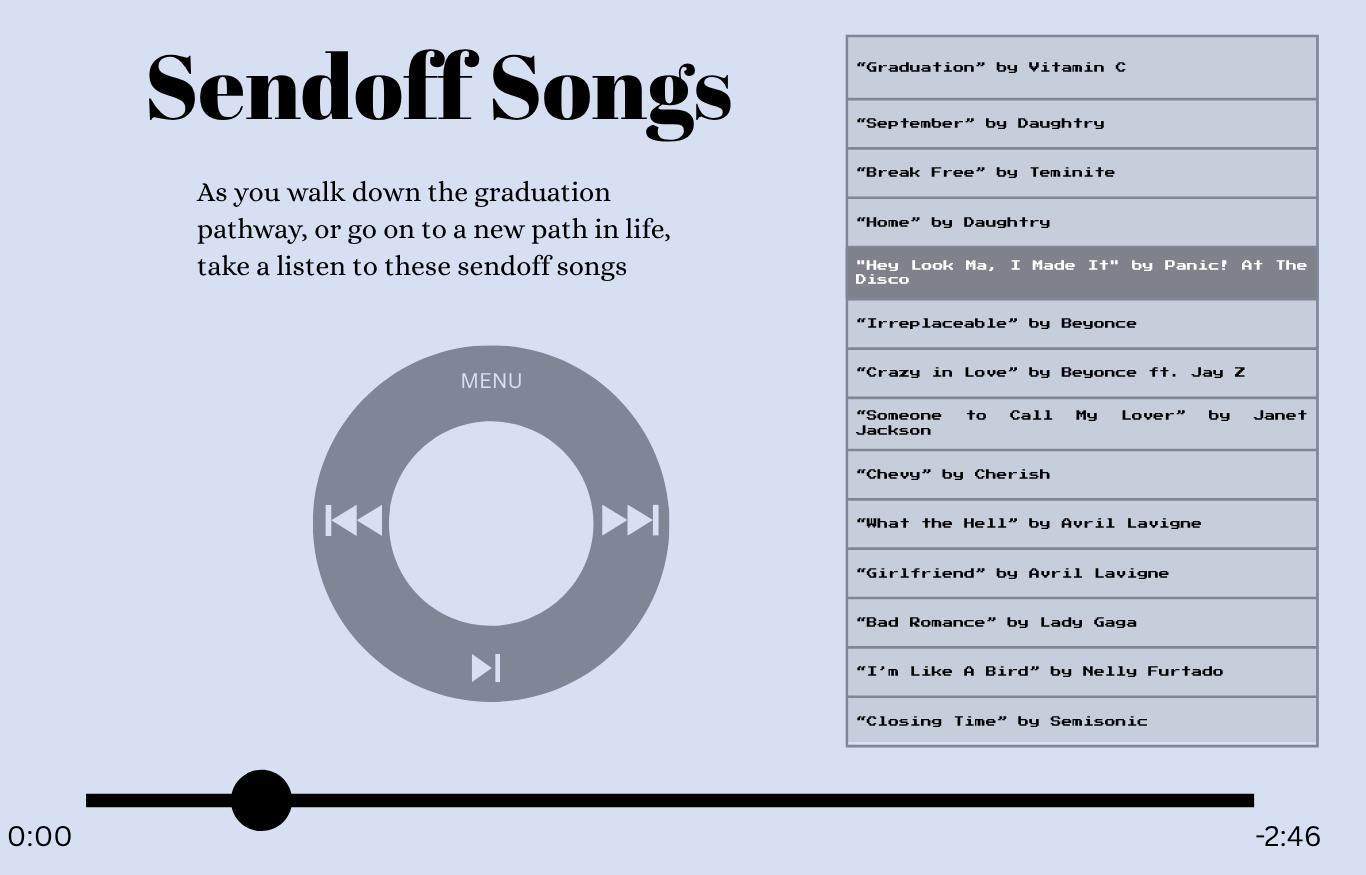

JULEE CHAU STAFF
After graduating high school, I found myself feeling a lot of regret about not being sociable, joining many clubs and making those key friendships. When I started going to Meramec fall of 2023, I knew I wanted a new start, a new identity.
I pushed myself to approach new people almost everyday my first school year at Meramec and was pleasantly surprised at how warm and friendly everyone was on campus. As I kept making new connections and being sociable, I found my confidence rising exponentially. When classes were rough and I was burnt out from all the studying, I knew I could count on those few hours of lunch time with my friends to brighten my mood. In between our busy schedules, my friends and I shared fond laughs and conversations in the cafeteria and out on the grass on sunny spring days.
In the spring semester of 2025, I joined two clubs that transformed my life. One of them was the Campus Activities Board (CAB), where I was able to be involved in the planning of a variety of student events. Some of my favorite events were the Stuff a Plush giveaway where I handed out plushies for excited students to give to their loved ones on Valentine’s Day. For Outdoor Movie Night, I made the poster, gave out snacks and free blankets for students as they enjoyed our screening of Wicked with friends in cars. Joining CAB helped foster valuable leadership skills that I will carry with me as I hope to engage in more community building projects in the future.
Another club that left a mark on me was Meramec’s student led newspaper, The Montage. As a member of The Montage, I was tasked with coming up with story ideas, interviewing students, and of course writing my stories. I wrote a piece about Open Mic Night, an event where my friends and I and many students shared their love of music, poetry, and comedy with each other; leaving a very fond memory for everyone involved. Through the student newspaper, I also got my first comic strip(s) published for the first time.
Ultimately, being a part of The Montage helped me rediscover my love for writing and art. It showed me how writing can be a powerful tool to tell stories and record precious memories that I will look back on for years to come. Additionally, it was at Meramec that I learned how to truly study for the first time. In high school, I was always a straight A student despite not having to study as much as my peers.
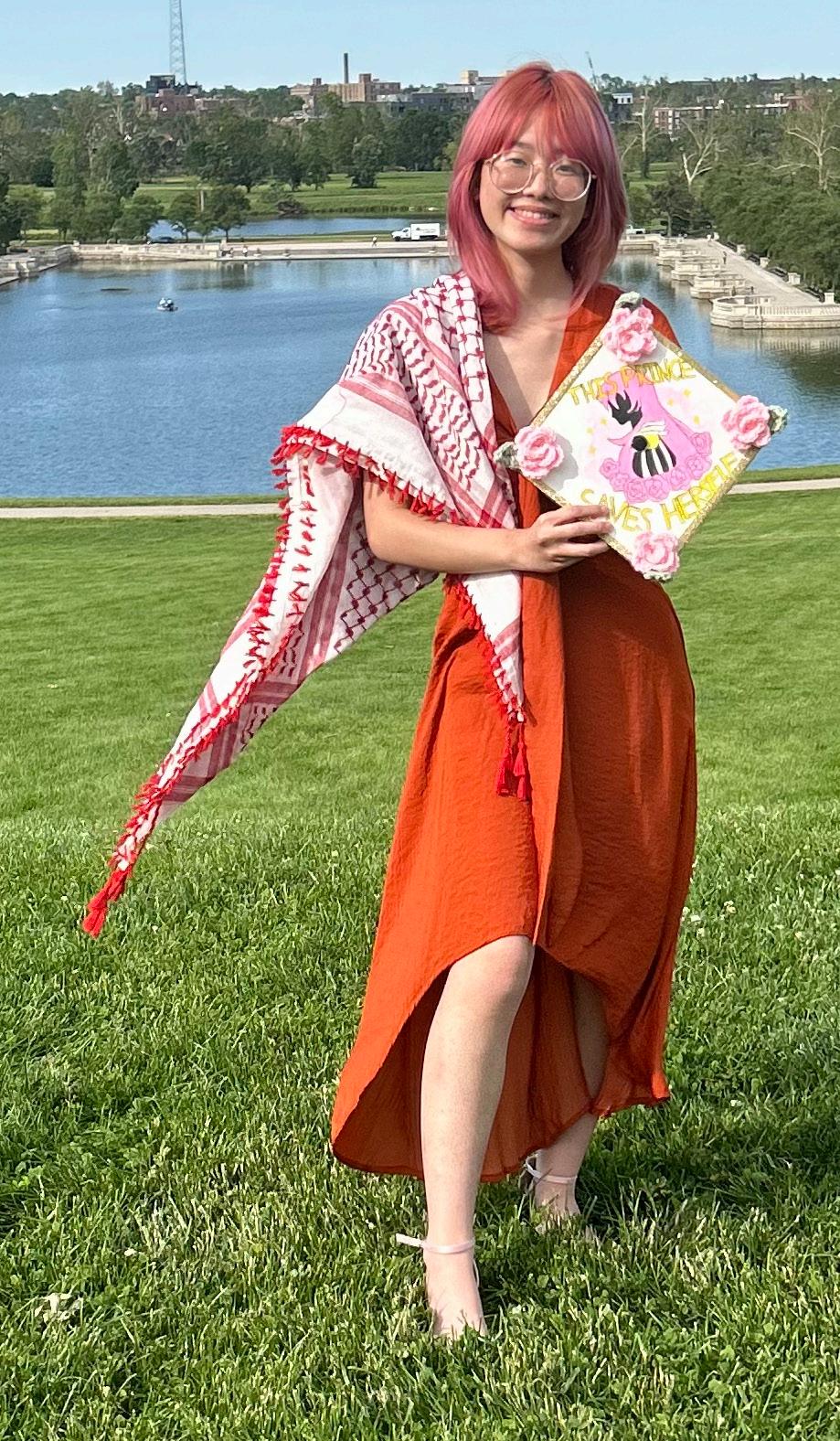
When I got to Meramec and took my first chemistry class, I was thrown for a loop at how much more demanding college courses are. As I kept taking harder courses like Calc 1 and 2 and Engineering Physics, I had to challenge myself to build better study skills in order to pass. I spent so much time in the tutoring center learning how to problem solve, how to use study guides, how to use practice tests; things I’ve never needed to do before. Now, I can safely say I’ve built study habits that will follow me throughout my academic journey and onwards. It was also at Meramec that I was able to hold my first student job for two years. I worked at the front desk of Meramec’s tutoring center, where I greeted students, made appointments, and helped students get where they needed to be. All my life, I have been a shy kid. Having a student job gave me a safe space to nurture my communication skills and work ethic. It also made me feel more involved on campus as the people I greeted everyday became good friends.
Truly, the best thing about my two-year journey through Meramec was finally achieving a sense of belonging. As a result of me putting myself out there, I feel like I’ve found my people, friendships that will last for a lifetime. This sense of belonging has boosted my self-esteem, allowing me to grow emotionally and grounding me as an individual. Meramec has offered me a second chance in my school journey. I’m planning to transfer to UMSL next for their nursing program and minor in either psychology or political science. I’m also joining UMSL’s Pierre Laclede Honors College. I will carry the lessons I learned at Meramec to UMSL and hope to grow further as a student leader.



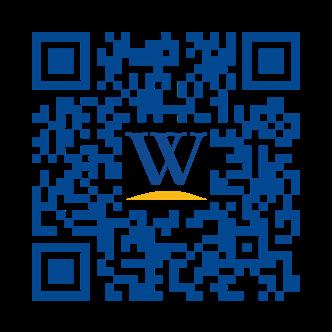


JULEE CHAU STAFF
Transferring to a new university can be a scary process for many students, but it doesn’t have to be. Alumni Skylar Hult graduated from Meramec with his STEM associate degree in the summer of 2024.
“Graduating felt phenomenal. I didn’t come in thinking I was going to get an associate degree. But I kept taking classes, and realized I liked math and physics, so I became a full time student,” he said.
Hult successfully transferred to SLU and has been attending the school for about a year. “I chose SLU because it was convenient, offered good merit scholarships, and the closest school that had the major I wanted in Meteorology,” he said.
He shares that SLU took most of his credits from Meramec, but there were still some problems. “I have a very specific degree so Meramec didn’t have the big prerequisites
for my major. Being behind is kind of the fear for transfer students,” he said.
However, he says that most of his transfer process went smoothly. “My professors have been really accommodating, I don’t feel judged for transferring and my major courses being delayed. They’re willing to work with me on material that I’m not too savvy on,” he said.
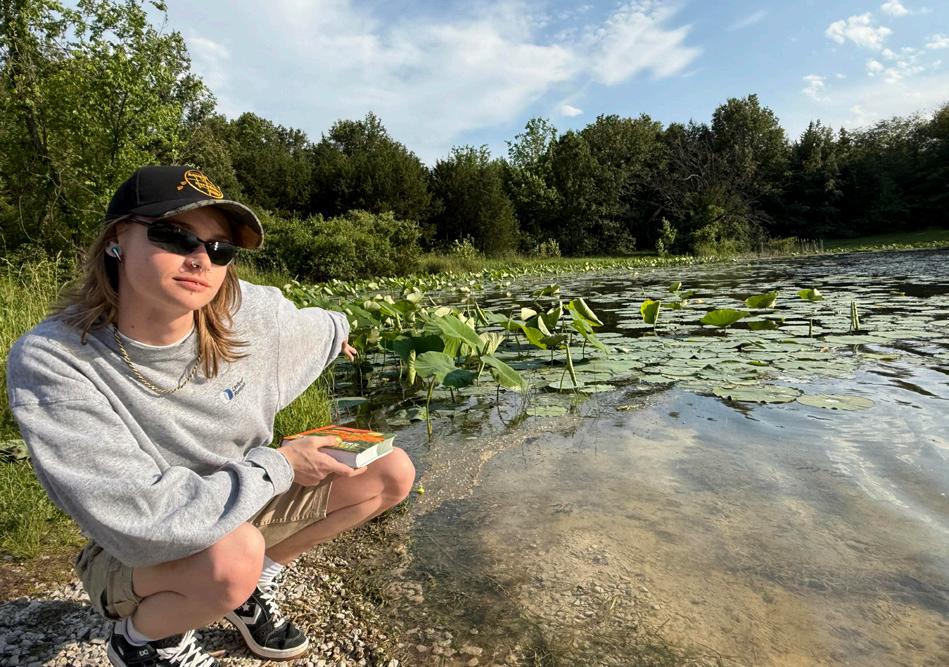
Some big advice Hult would give Meramec students is to compare their credits to the courses at the university they want to attend. “Universities like SLU and UMSL offer websites to check how your courses are actually transferring, like “Transferology,” he said.
As for scholarships, he said there are plenty out there to choose from.“There are a good amount of transfer scholarships for community college students. Also if you have the grades, join organizations like PTK,
they offer $2,000 scholarships that can be renewed every year,” he said.
Hult suggests looking at university portals for merit scholarships and to fill out the FAFSA for needs-based students. He also says to be on the look out for niche local programs, “UMSL has a great joint engineering program with WASHU, which could be an affordable option for STLCC students.”
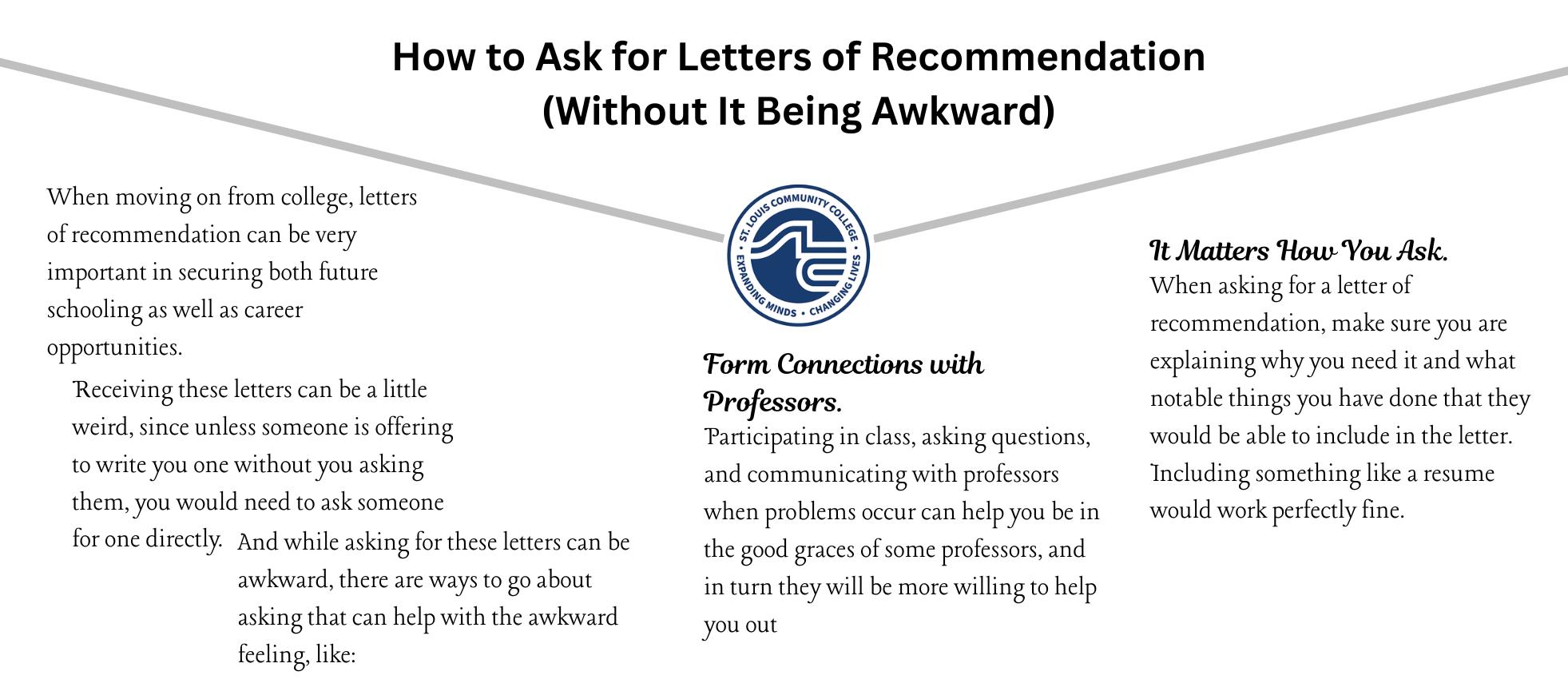



IAN SCHRAUTH STAFF
Transferring credits between colleges and universities is a complicated process. It is assumed that all credits will transfer from school to school, but that’s not always the case.
One of these myths is that someone will say “all of the credits that I take will transfer to the college seamlessly.” While general education courses typically transfer, it’s not a guarantee. For example, some colleges may only accept a small percentage of credits from another institution, or they may reject certain courses due to differences in content. It is essential to consult with an academic advisor and review transfer agreements to understand what will and will not be accepted.
Another myth is that transferring credits will delay graduation. This is like comparing apples to juice. Transferring credits from another institution has nothing to do with graduation dates. In reality, if a student plays their cards right, they can graduate earlier if they transfer credits to another school.
This myth is not so common, but it is out there. That is once a student picks a school for FASFA, that’s it for funding. This is definitely not true. While there is a limit on how much FASFA a student can use (up to 12 semesters), students can send their FASFA to another school and they will accept it. As long as a student does not use FASFA funding at two different schools at the same time, they’ll be good. Keep in mind that institutional scholarships may not transfer.
Some students also believe that they will lose
credits when transferring. While it is true that similar courses from different schools may be considered duplicates and result in one not being accepted, many colleges have articulation agreements in place to minimize such losses. Completing an associate degree can also increase the likelihood of full credit transfer.
There is also a lesser-known myth that top colleges do not accept transfer students. In fact, many top institutions welcome qualified transfer applicants. Starting at a community college can be an effective strategy for those seeking to improve academic standing or gain additional experience before applying to a competitive university.
The last myth is that old credits don’t transfer. Unless it’s something like how to become a milk delivery person in the 19th century, credits will NEVER expire. Just because a student hasn’t graduated in 10 years, doesn’t mean that the work done in that Math class is irrelevant, but there are some exceptions.
Transferring credits between colleges can feel like navigating a maze, but understanding the myths versus realities makes a huge difference. It’s not a one-size-fits-all process, but sometimes credits will be lost. and other times will gain unexpected advantages, like an earlier graduation date. The key is staying informed, asking questions, and making decisions based on long-term goals. With careful planning and a bit of persistence, transferring credits can be a powerful step forward and not a setback.


JULEE CHAU STAFF
On May 18, STLCC graduates walked the 2025 commencement ceremony at the Chaifetz Arena. Students celebrated 2 years of hard work and a new start in their journey; whether that be transferring to university or employment in their fields.
“I felt ahead and behind everyone, it’s definitely a feeling of being in between life stages because I’m younger than most of my peers,” said graduate Nadia Agarwalla.
Agarwalla celebrated graduating as an early college student with honors from PTK. For 2 years, she contributed her time to student organizations like Campus Activities Board (CAB) and Student Government Association (SGA). “I learned how to manage responsibilities all at once because I was a student, worked, and was in honors. I learned subtle social skills as well, how to collaborate with coworkers, with my boss, and friends from different backgrounds,” she said.
She says some of her best accomplishments include the honors projects she did for her classes. “My last honors project for my ethics class was one of the best papers I’ve ever written.”
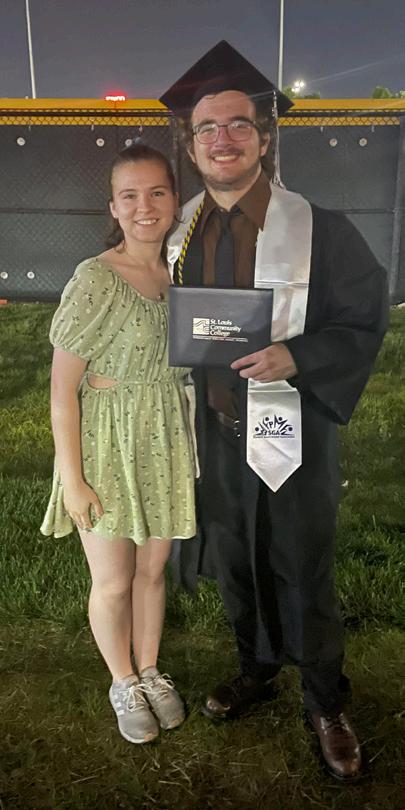
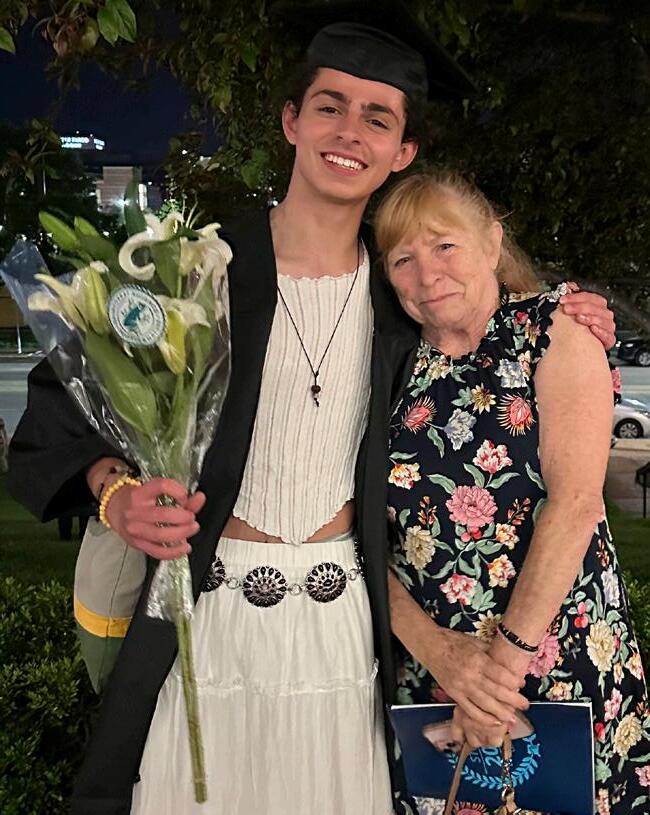
AT LEFT: Graduate Tony Sambo poses for a picture with his girlfriend after walking the 2025 commencement ceremony
AT RIGHT: Graduate Ali Almamori poses with his mom after walking the 2025 commencement ceremony.
Agarwalla plans to continue her honors work at the Pierre Laclede Honors College at UMSL, where she is pursuing a bachelor’s in political science.
Another early college student, Ali Almamori, celebrated graduating with his associates. “I’m so proud to have gotten a lot of my college credits done early,” he said.
During his time at Meramec, Almamori was the president of CAB and Pride Club. “What taught me was going through failure, I had to learn how to be reliable to my group members and to make sure I wasn’t letting the people who are dependent on me down,” he said.
To future Meramec students, he said “Go to campus expos, get involved early, there’s so many positions available. Even at community college, you can do so many things that will prepare you for your future education.”
Almamori plans to transfer to DePaul University in Chicago, where he is majoring in psychology and hopes to become a therapist one day.
At the commencement, student Autumn Kahn celebrated graduating as a first generation student, “Having my family there with me was a very emotional experience,” she said.
Kahn was vice president of SGA and a
member of the Chemistry club at Meramec. She won two awards at the 2025 SGA Banquet, including an “Emerging Leader” award. “I knew a few professors had nominated me. I’m grateful because I feel like it opens up more opportunities for me in the future,” she said.
To students who are starting a new school year at Meramec in the fall, she says: “Don’t be afraid to go join clubs, to stand out for a good reason, or talk to new people and professors.” Kahn plans to pursue an accelerated program for a PhD in education at Webster University.
Graduate Tony Sambo also celebrated his accomplishments at the commencement ceremony. “It was more upsetting to leave my friends than just graduating the school,” he said. Sambo was president of SGA and the leader of Chemistry Club. He helped put on events like the 2024 Halloween party on campus that had booths and a haunted house, drawing in a lot of student participation.
At the 2025 SGA Banquet, he received the “Pillar of STLCC” award and Chemistry club won the “District Club of the Year” award. Sambo hopes to continue his student leadership at Southern Illinois University, where he plans to get a master’s in architecture and minor in communications.

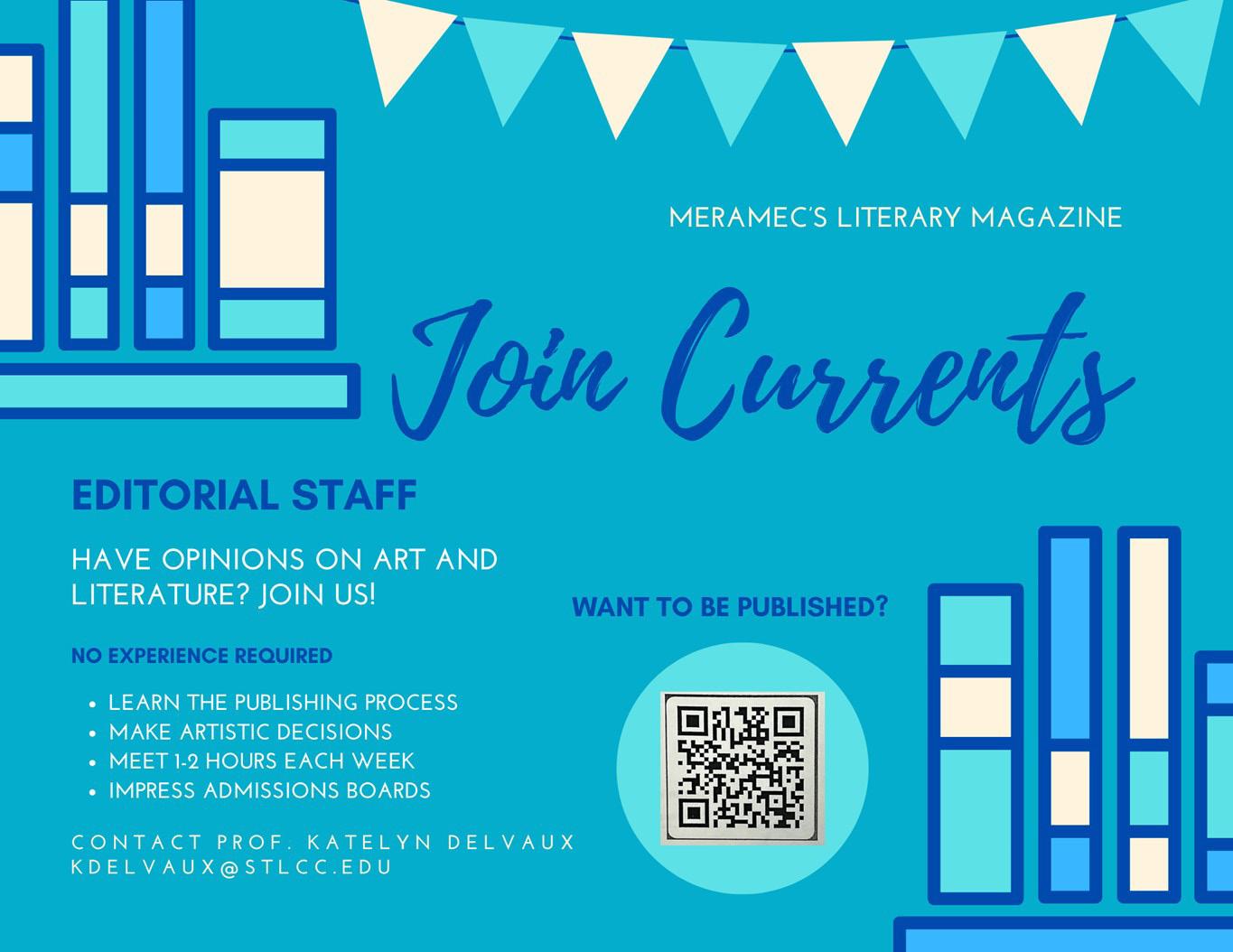
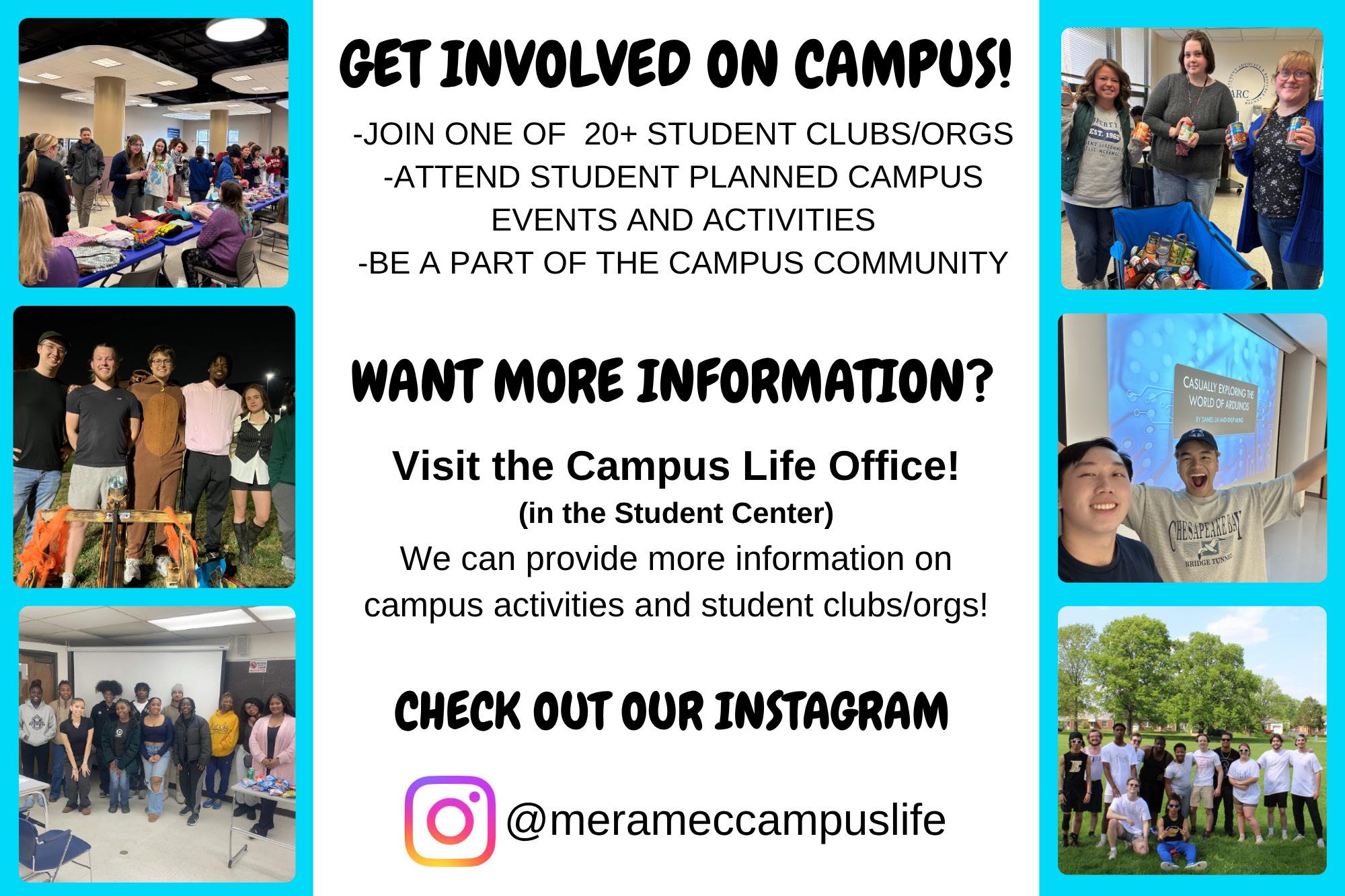
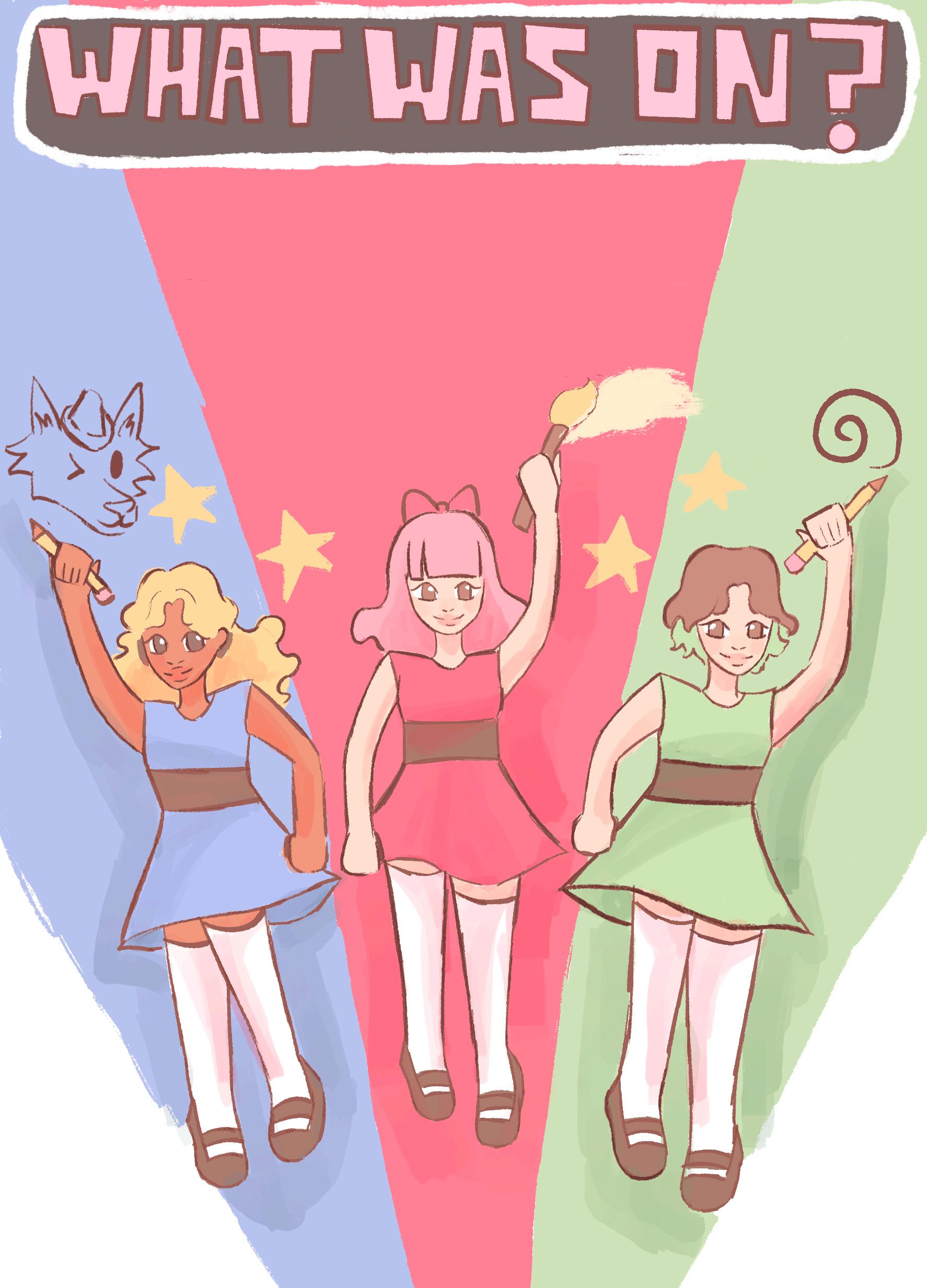
Like any television program with twists and turns, there have been some notable news stories from the past year. STLCC cut back on DEI policies and former Professor Dr. Neal sued the college. Tune in as a budget shortfall involving a Board Of Trustees member sparks controversy, take a look at Montage archives and take a moment to remember Professor Reni Joseph who passed away in November 2024. For sports fans, change the channel to see an overview of eSports at STLCC. Also, scan the QR codes throughout the section to view longer versions of articles online. All this and more!
Sit back, relax and enjoy the show.
LINDSEY UNNERSTALL SPORTS EDITOR
Gov. Mike Kehoe’s Executive Order banning the use of state funds for DEI and Missouri public agencies from considering DEI in their policies is already taking effect at STLCC.
The Executive Order was signed on Feb. 18 and aims to eliminate funding for any public state agencies’ DEI positions and policies. This will affect all Missouri public colleges and universities, including all STLCC campuses. So far, the college has already removed DEI information from its website and is in the process of switching Chief Engagement Officer D’Andre Braddix’s role and job title.
“Under the Chief Engagement Officer, the role entailed furthering the college’s mission, vision and values through strategic engagement, so that was both internally here at the college and externally in terms of community engagement,” Braddix said.
“I will now be the ‘on buds’ person, supporting students, faculty and staff through academic affairs, helping to foster engagement within students and faculty within their schools,” Braddix said. “While in my Chief Engagement role, I’d have a connection to diversity, equity, inclusion in terms of who is not being engaged right now, whose needs we are not meeting. With this new role I’m not really focusing on those areas; I’m looking at how to build community within the college.”
According to Chancellor Jeff Pittman, many of the changes on campus following the governor’s executive order will be regarding verbal policies, grammar and removing what is considered “DEI language” from the school’s website and formal policies.
“We’re an open access institution; all students are welcome here. Our values are to provide an educational pathway for anyone that wants it. In that regard, we’re lucky because


our mission provides all those opportunities for students regardless,” Pittman said.
Robert Lee, dean of the South County campus, is part of the response team tasked with determining what is considered DEI and how to properly address situations regarding the executive order. He suggested that there will be changes in the wording of class course descriptions and learning outcomes to comply with the order, however, course curriculums will not be changing at this time.
“As a publicly funded institution, if we are required by the state government to change the policy, we will. [However], Dr Pittman was very clear that a verbal change doesn’t change the fundamental mission of what we do or who we are,” Lee said. “We believe in being an open door institution.”.
“Hearing about it kind of made my heart drop,” Meramec student Jamorah Triplett said. “It’s weird because it’s a place that’s open for everybody, and with me being a minority it is kind of scary. To hear that the college that I’m going to, with such a diverse group of people, is changing these policies is kind of sad.”
Philosophy Professor Danielle Walker feels similarly.
“It’s extremely disheartening and disappointing, specifically since my daughter is about to enter college,” Walker said. “It impacts my community, because I am a woman of color, an African American, and really it will impact all Americans, because
DEI isn’t just about race. It impacts people with disabilities, learning accommodations, international students, and it could impact all of us.”
Walker said she discusses topics in her classes such as racism, environmental racism and discriminatory practices, and she plans to continue to teach about all of them.
Communications Professor Christaan Eayrs said he doesn’t plan to change the way he teaches or interacts with his students because of the changing policies.
“I don’t think what I do in class or how I interact with my students is going to change much. I respect my students, I recognize and acknowledge their differences, thinking of each of them as a unique individual and that won’t change. And my desire to help them find access to resources and support that they need to be successful won’t change,” said Eayrs.
Braddix said he believes that diversity, equity and inclusion policies have been misinterpreted by many.
“Unfortunately, people often get wrong what it’s meant to be because people implement it in the wrong way, but I was very proud of the way we were implementing DEI here at the college, in which every single person was considered,” Braddix said.“The college’s heart is absolutely in the right place, and I think we will continue to live up to our commitment.”

Over two years after her abrupt removal from STLCC, former Meramec Political Science Professor Emily Neal has filed a lawsuit against Dean Patrick Mallory, Campus President Feleecia Moore-Davis, Vice Chancellor of Academic Affairs Andrew Langrehr and the college as a whole for employment discrimination and unlawful retaliation.
In court documents exclusively found on PACER and filed in mid-October, Dr. Neal alleges that the actions, omissions and decisions by these individuals and the institution were designed to cause and will continue to cause her to lose wages, compensation, entitlement and rights. She also alleges that their actions have caused her to suffer humiliation and harm to her reputation, emotional and mental injuries, pain and suffering and other adverse consequences.
Neal’s departure, as detailed in this lawsuit, came about after what she said were years of issues between her and administrative members. Neal, who had been employed by the college since 2009 and had previously served as President of the Faculty Union, had notably clashed with STLCC’s leadership over the years, and specifically during Chancellor Jeff Pittman’s ongoing tenure.
In her lawsuit, she details a few of those incidents, including an incident in 2017 where she received a written reprimand for comments she made during one of her classes about the college’s Board of Trustees. Another retaliatory incident that she claims took place in 2021, where she claims she was reprimanded again for what the college alleged was “improper word choice and tone” in an email to a colleague regarding
their unauthorized access to one of Neal’s online class spaces. Neal claims that her work environment progressively worsened after filing another grievance against Dean Mallory regarding that incident.
Specifically, the one direct event that led to her removal were comments she made at an off-campus lunch on Aug. 16, 2022 with members of her department regarding the activities of other administrators, including allegations of an affair between a high-level administrator and a subordinate and that another senior administrator permitted their child to bypass the waitlist for enrollment in a popular degree program. In a formal response filed in January, the defendants allege that the lunch was not “off-campus.”
While no other details were revealed for the latter allegation in the lawsuit, The Montage is continuing to actively investigate the latter claim.
Dr. Neal is silenced, removed from Meramec
After being placed on leave, Neal was forbidden from contacting her students, and faculty were discouraged from speaking about Neal’s comments any further, she claims in the lawsuit. In October 2022, Campus President Feleecia Moore-Davis issued her recommendation for the termination of Dr. Neal’s employment; Neal was formally terminated in March 2023.
In January, a legal response from the defendants appeared on the case docket found on PACER. In the documents, the defendants admitted to certain basic facts, such as Neal’s employment and specific reprimands, but denied the context and implications of her allegations. They assert that Neal’s actions were unprofessional
and that any disciplinary measures were justified, and emphasize their lack of knowledge regarding many allegations, leading to denials. They also argued that Neal’s claims should be dismissed for various legal reasons: they claim that Neal failed to state a claim upon which relief can be granted and that they acted in good faith and for legitimate managerial purposes. They also argue that Neal’s claims are barred by statutes of limitation, failure to exhaust administrative remedies, and lack of underlying constitutional violations.
In February, a date was set for a jury trial to commence; it is tentatively set to begin on Aug. 24, 2026. Neal is represented by Laura E. Schrick, a member of the Mathis, Marifian & Richter firm out of Belleville, Illinois.
In November, STLCC’s General Counsel Amy Clendennen told The Montage that “We are not able to discuss details of pending litigation. However, St. Louis Community College is committed to treating all employees with dignity and respect and will vigorously defend itself against these allegations.”
Read the original story, and view the entire lawsuit at meramecmontage.com. In addition, you can read the entire lawsuit by scanning the QR code below.


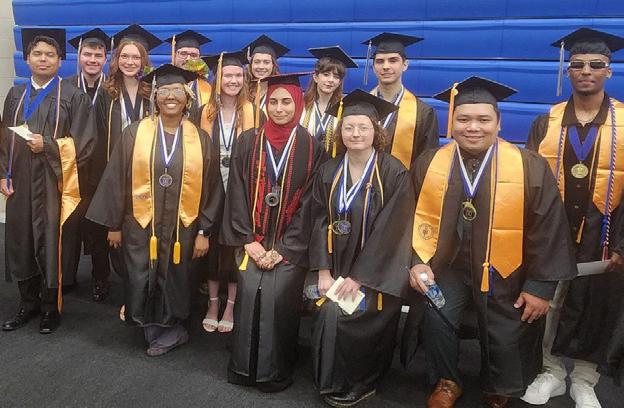
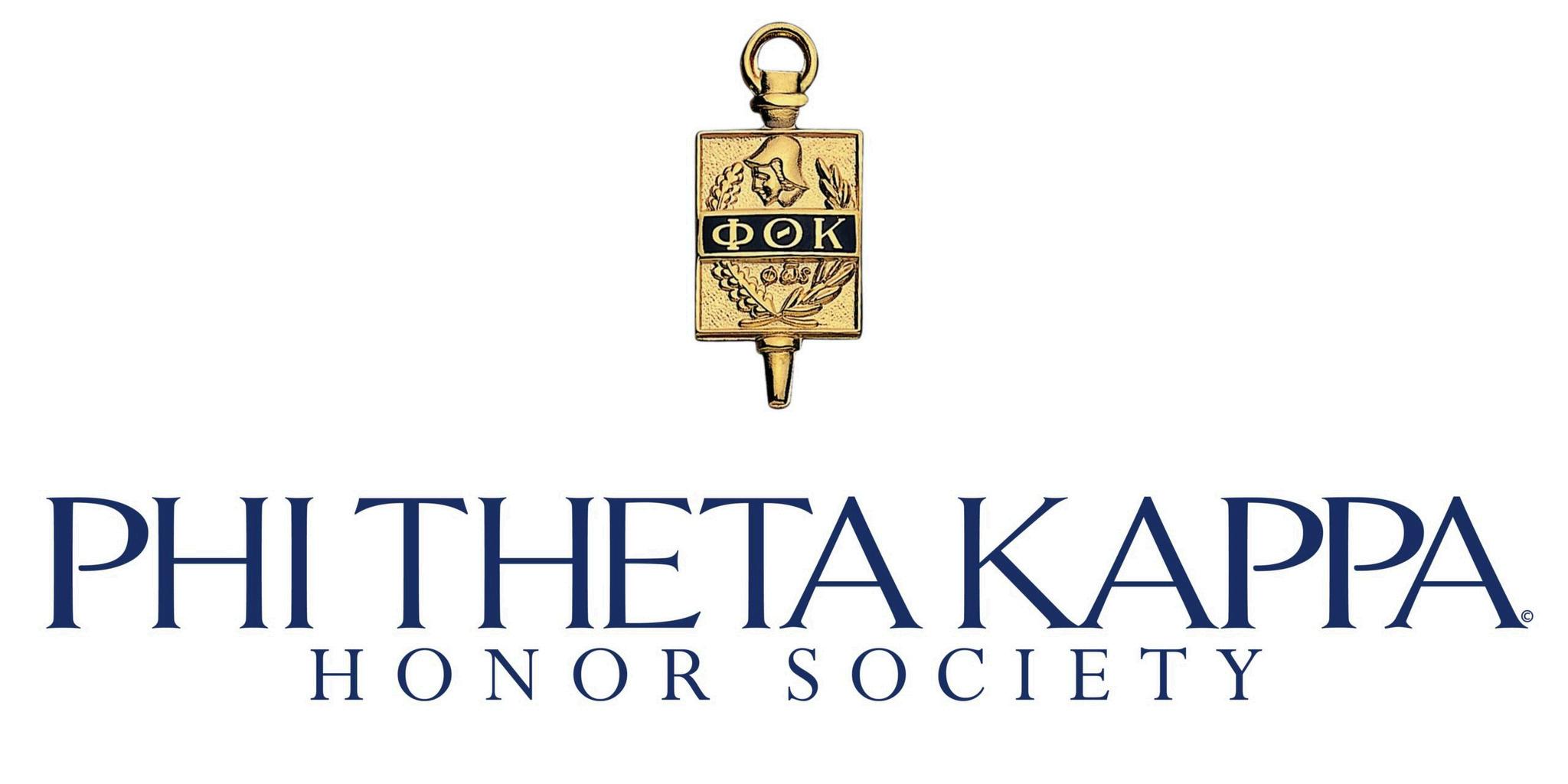
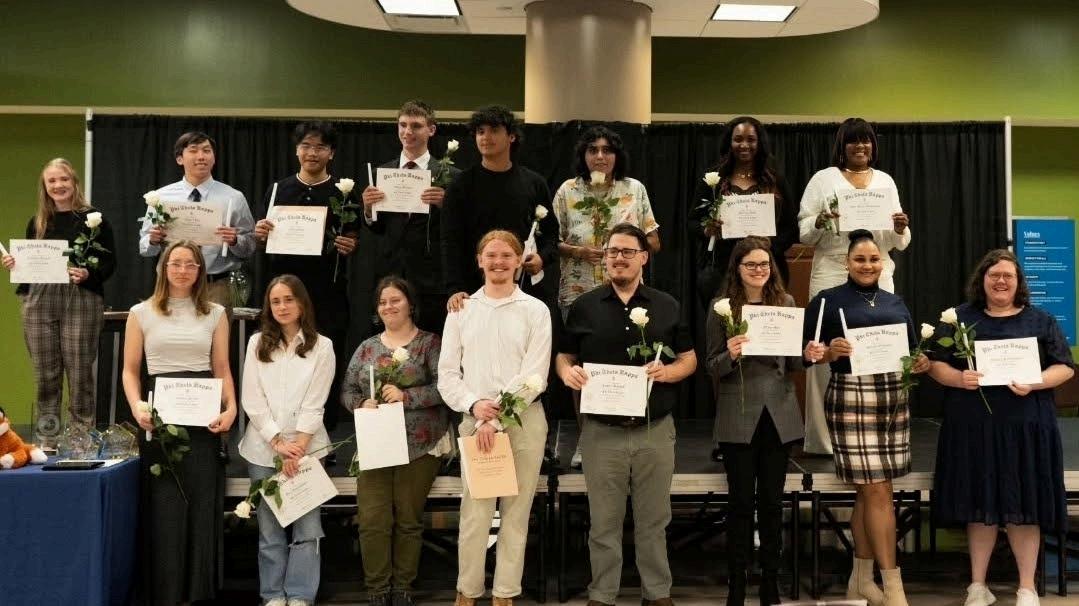
JACOB POLITTE ONLINE EDITOR
STLCC Board of Trustee Chair Kevin Martin’s involvement as the President of the Board of Education at the Ferguson-Florissant School District raised some eyebrows in the local education scene after that Board announced a $7.7 million budget shortfall that will lead to cuts to resources and staffing.
This comes after that same Board had already
slashed $1.4 million from their budget in late February.
Martin told The Montage that the shortfall did not come out of nowhere, noting that these claims from the district as well as turnover in the district’s financial and human resources offices the past few years helped lead to the oversight.
The shortfall, while not connected to the college’s business, has left some members of the STLCC community questioning if a similar incident, specifically a budget shortfall, may happen under the college umbrella.
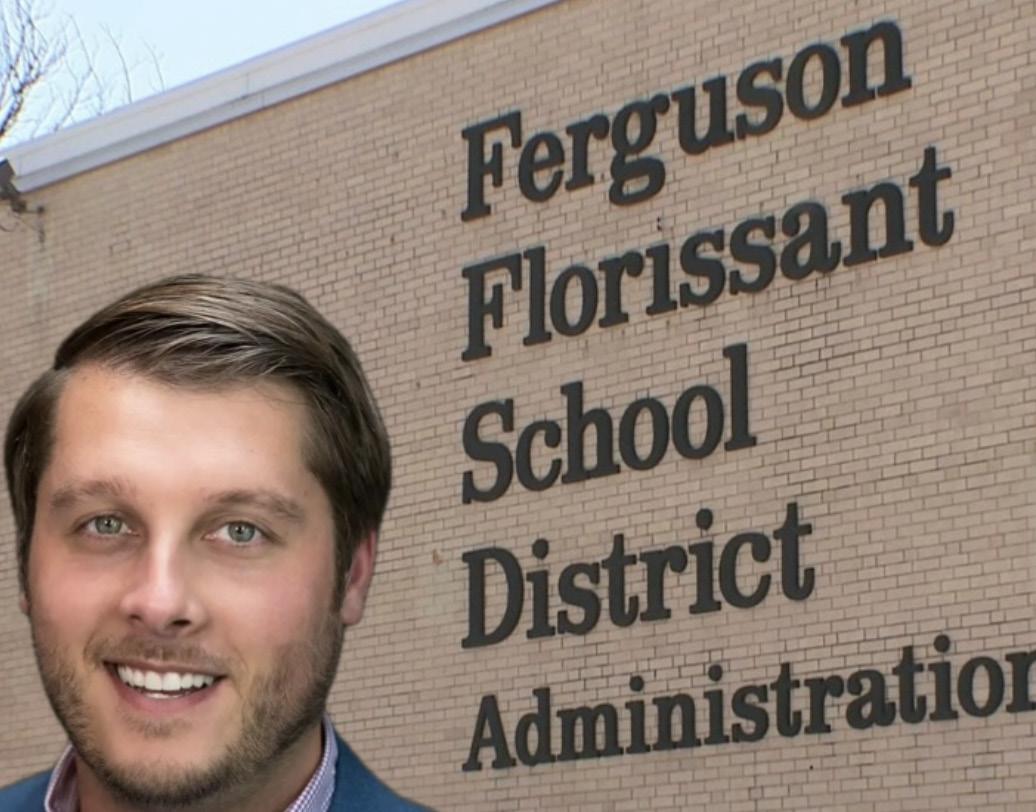
Chancellor Pittman says that there’s no reason to worry, citing his strong working relationship with Martin.
“Kevin, he’s a very good trustee. He’s a very good board chair,” Pittman said. “His primary focus is on students. He wants the college to continue to improve in the
JACOB POLITTE ONLINE EDITOR
Meramec Chemistry Professor Reni Joseph, Ph.D, passed away peacefully on Nov. 11 in Ballwin. No cause of death was publicly revealed, but she had been battling what was described by colleagues as “a long illness.” She is survived by her husband, Dr. Suresh Mathew and her children Hannah, Jason, and Shayna.
Joseph, a long time member of the Chemistry Department, was also an accomplished academic beyond STLCC. She
completed a fellowships at Harvard University and National Research Council in Ontario, Canada. She was involved with the American Chemical Society (ACS) at both local and national levels, even serving as a Chair member of the ACS Committee on Minority Affairs, in addition to serving on various committees at the National Science Foundation.
Chemistry Professor Michael Hauser remembers her fondly.
“I was the first at Meramec to meet Dr Reni Joseph as I was guide when she interviewed with our department,” Hauser said. “I instantly liked her. In the years we worked
years ahead, [...] to provide students with as portable and high-quality access as we can to the programs we offer. And he’s driven by that, as is the rest of the board. I have nothing but positive things to say about Kevin, and I feel blessed that we have him as trustee.”
Martin himself says that he understands the concerns of the STLCC community, especially given the local press coverage this has received.
“I take those concerns seriously and am committed to addressing them with the Board. We are in no way a similar position as the Ferguson-Florissant School District,” he said. “When I first got on the Board, we had to make some difficult financial situations, which has placed us into a promising and healthy budget we have today.”
Martin’s current term on the STLCC Board of Trustees expires next April, and he said he does plan to run for another term.
together, I found her high intellectual ability was surpassed only by her unfailing graciousness. Reni always had a kind word for everyone and was outstanding at working with and for students.”
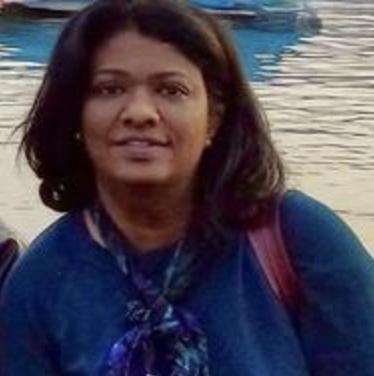

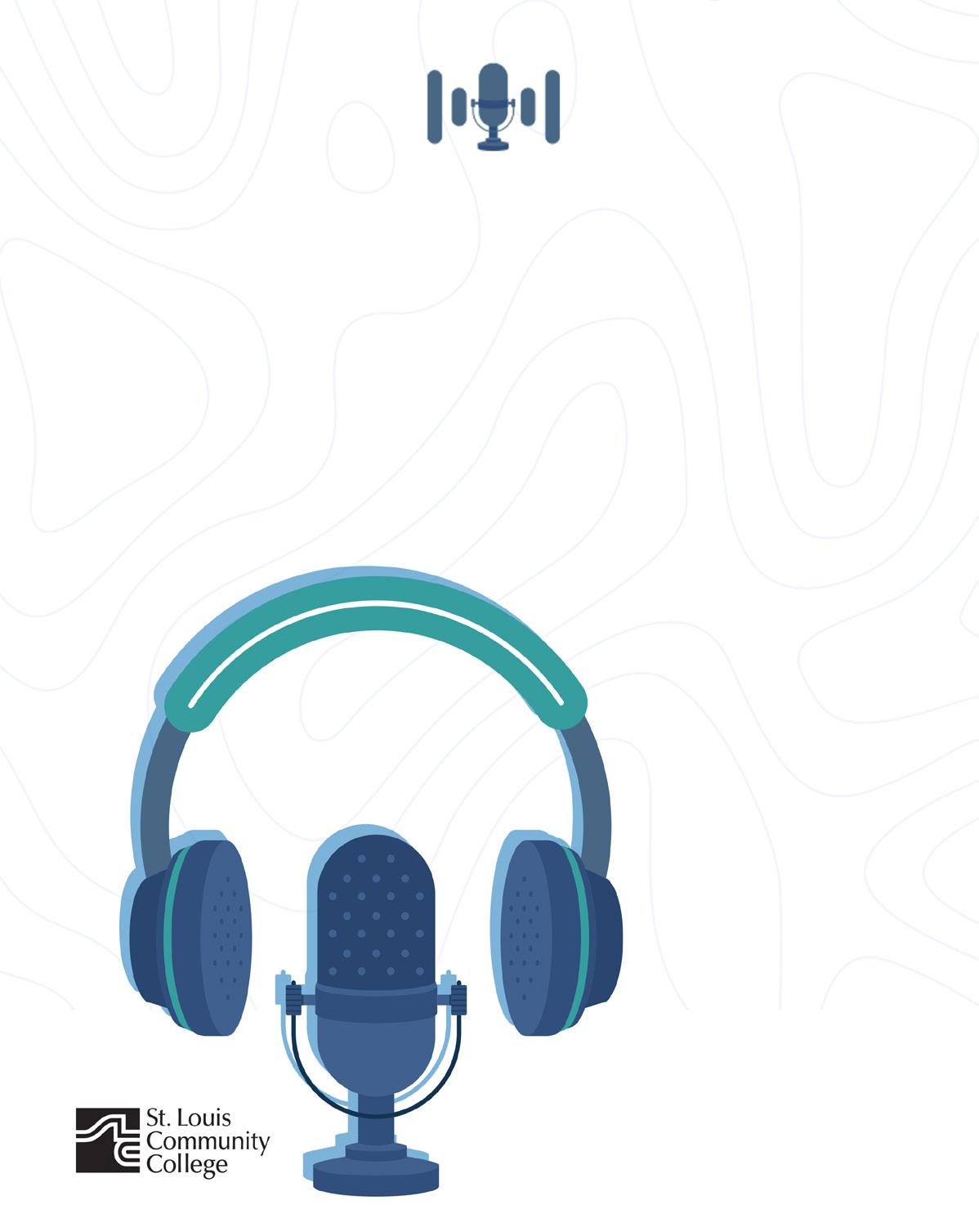




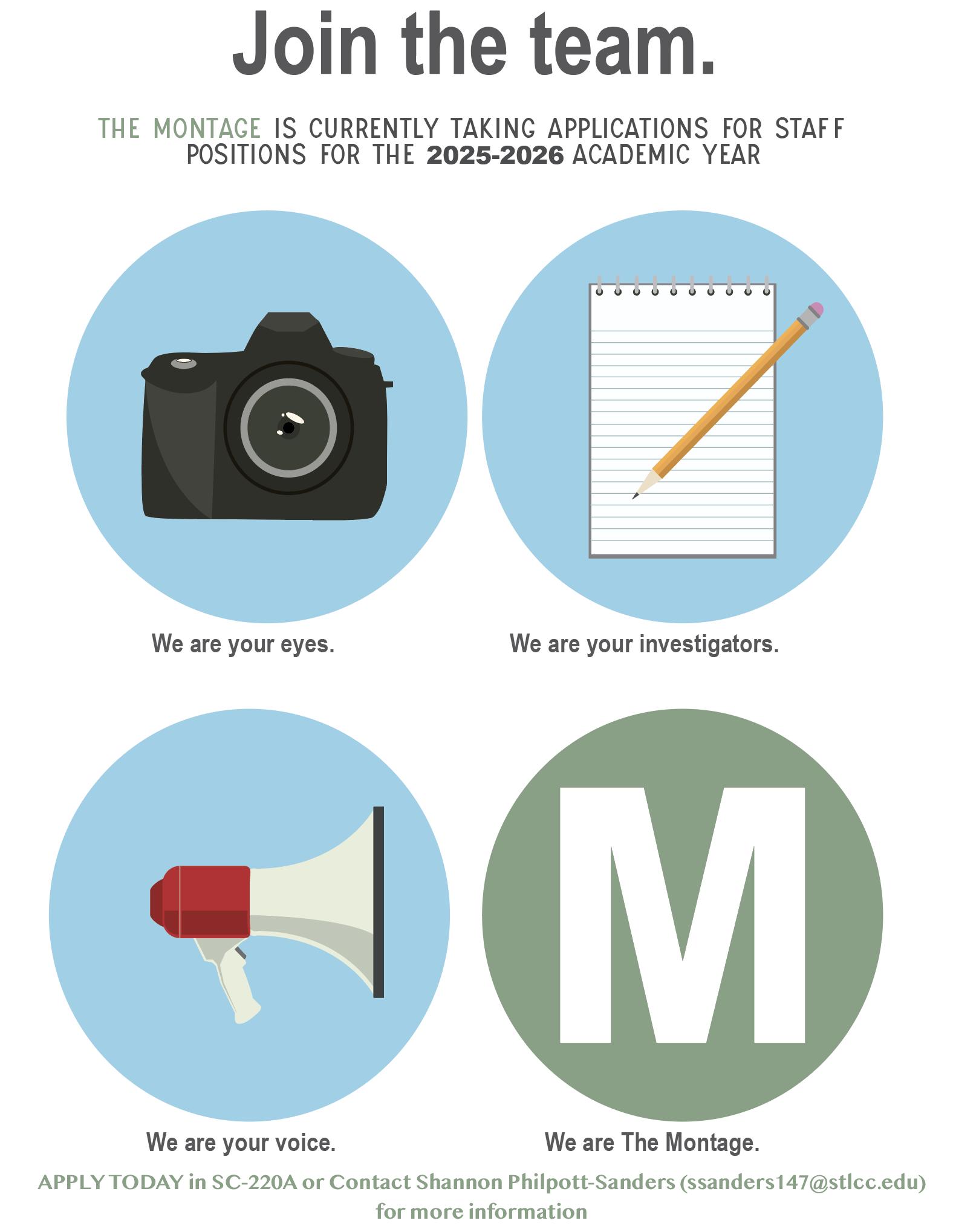
STLCC’s new eSports team, which debuted this year with a state of the art facility, emerged as the college’s top scoring team, finishing their season on April 15 with a record of 102 wins and 49 losses.
The new facility, housed on the ground floor of the college’s South County campus off Meramec Bottom Road near Arnold, took about six months to construct and cost a little over the $850,000 budget it was allotted. The 1,900-square-foot eSports space, formerly occupied by the building’s multipurpose room, features strategizing areas and stateof-the-art equipment, including 18 PCs and gaming systems like the PlayStation 5 and Nintendo Switch.
The college’s eSports coordinator and coach, Robert Cruz, said after the ribboncutting ceremony in Sept. 2024 that he can’t recall seeing anything like what STLCC has constructed for eSports before.
“This is a surreal space,” Cruz said. “This is a space that is going to be unique in it’s own right, both in character and design and the overall atmosphere we bring into it. You won’t find anything like this from the east to the western sea board.”
Those looking to get involved with the eSports program can contact Cruz at rcruz9@stlcc.edu and visit the newly redesigned Archers Athletics website.
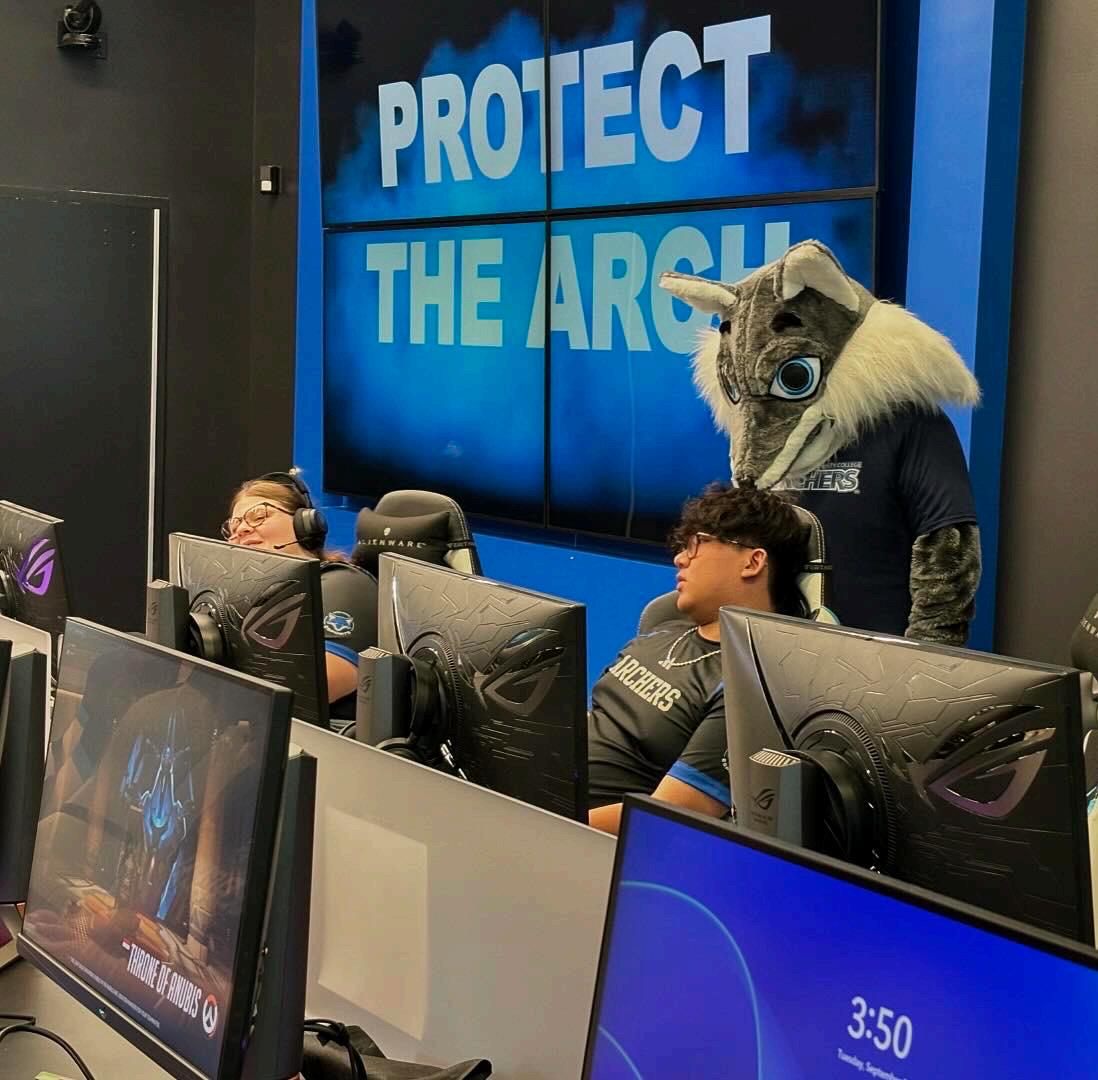
In what has become a yearly tradition, Archers Baseball returned to Busch Stadium to play a game on Sunday, Sept. 22.
This year’s game took place following the St. Louis Cardinals winning effort against the Cleveland Guardians.
The Archers fell short against East Central College, with the final score being 5-9 at the end of an eight inning game. Time expired before the game could reach a ninth inning.
The game was considered a scrimmage game by the National Junior College Athletic Association, therefore no official score was recorded by the NJCAA.
Nick Bonczkowski came in clutch many
times throughout the game, including hitting a home run that gave the Archers a total of two runs in one swoop. Drew Schultee also scored a notable run during the game.
Archer’s Baseball will return to Busch Stadium for a game this fall.

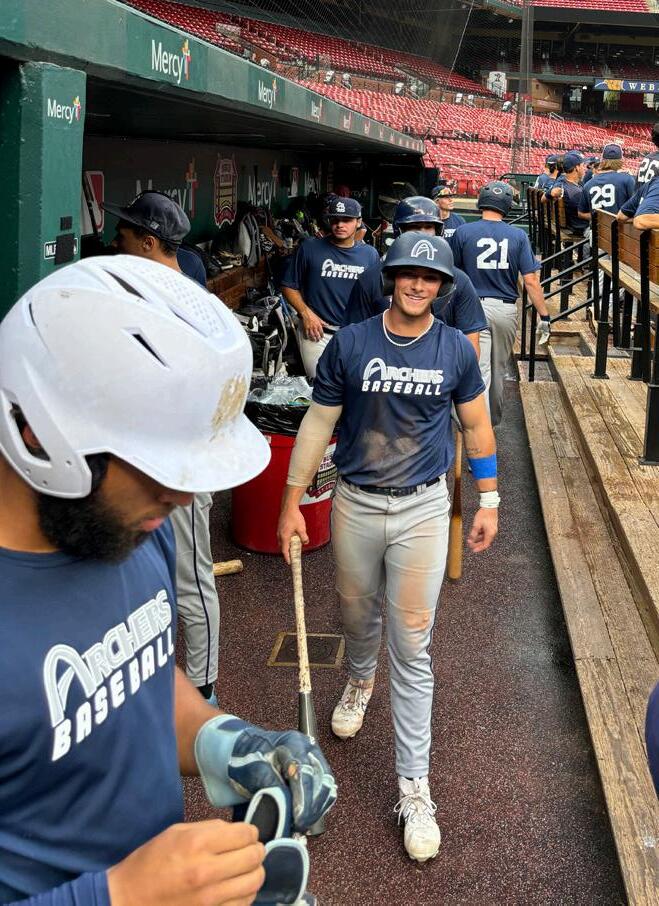

The Montage has been on campus to cover events impacting campus and the students on it for over 60 years. There were many important events that took place during the 2000’s which The Montage covered.
On Jan. 25, 2001, The Montage published a piece in memoriam of Glynn E. Clark, founding president of Meramec and namesake of Clark Hall, who passed away due to a heart ailment at St. John’s Mercy Medical Center in Creve Coeur at the age of 88. Later that year, The Montage covered the campus response to the 9/11 attacks.
A piece from late 2008 highlights the efforts of Meramec students to aid in New Orleans following hurricanes Katrina and Gustav.


One massive change The Montage covered in the late 2000’s was the closure of the Meramec Child Care Center, which closed Nov. 19, 2009 following a STLCC board of trustees vote.
A less contentious removal from the campus was asbestos, highlighted in a 2006 issue of The Montage. The Gymnasium Building as well as the now demolished Communications South Building experienced leaks which required several asbestos tiles to be removed.
One addition to the campus still in place today was the reptile exhibit in May of 2009 in the Science Building, which includes
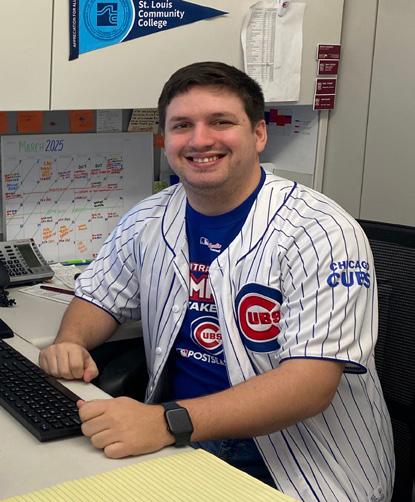

a variety of native Missouri wildlife. This addition, covered by The Montage, has the goal of allowing visitors to experience native Missouri wildlife up close as well as for study in zoology classes.
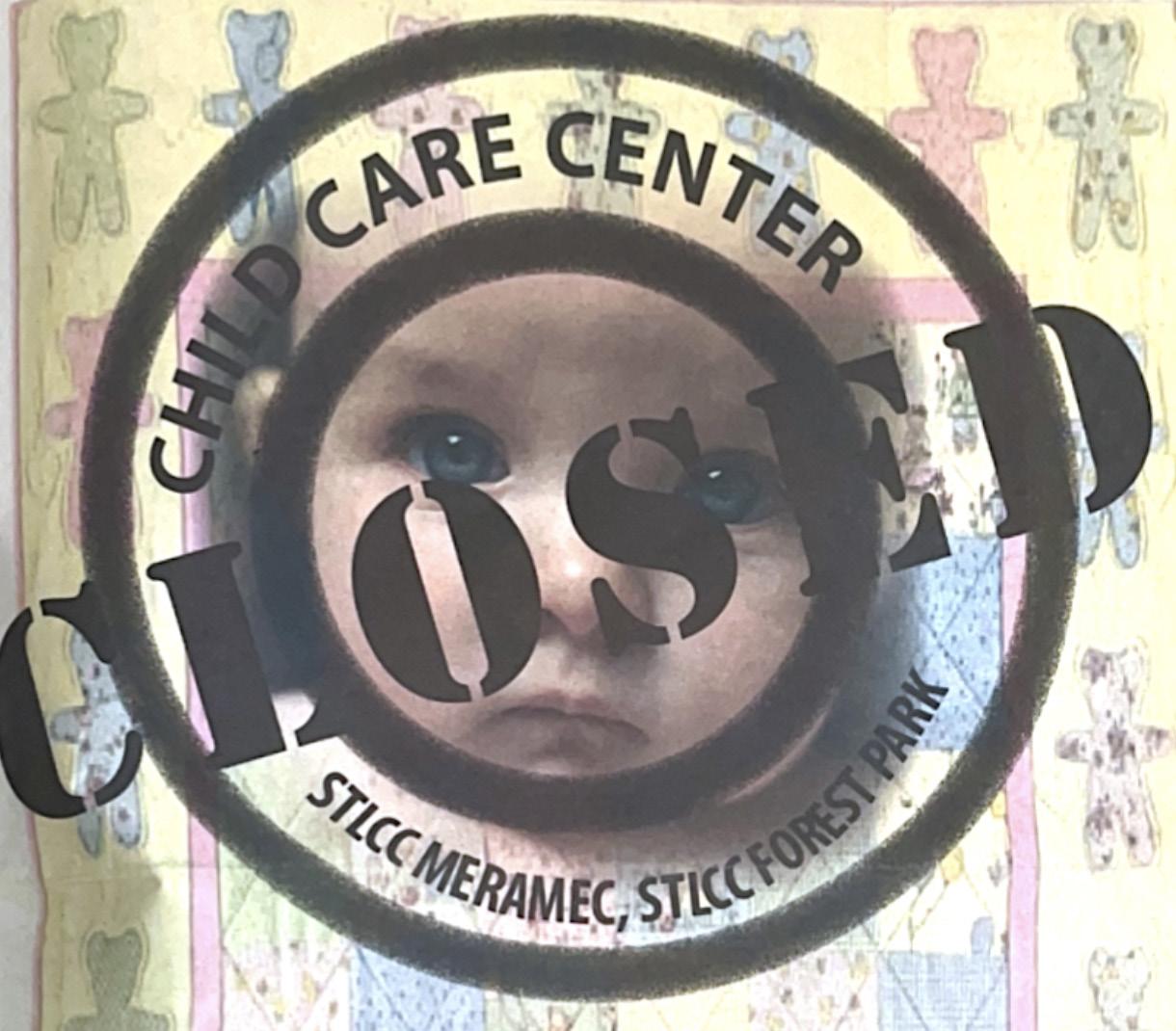


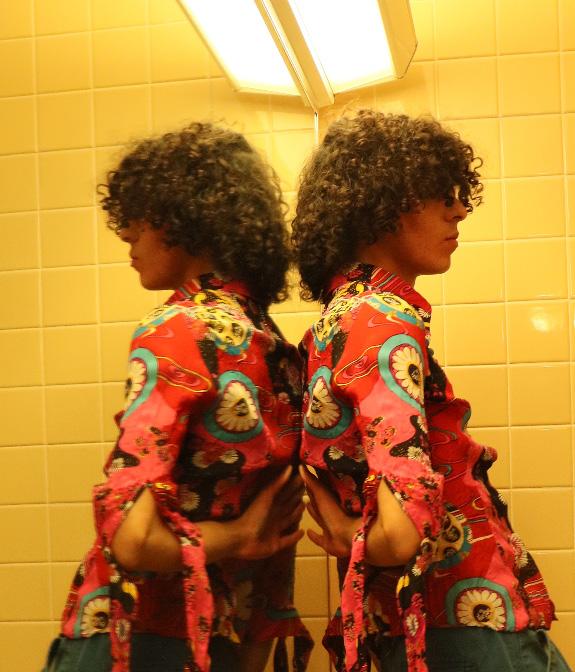

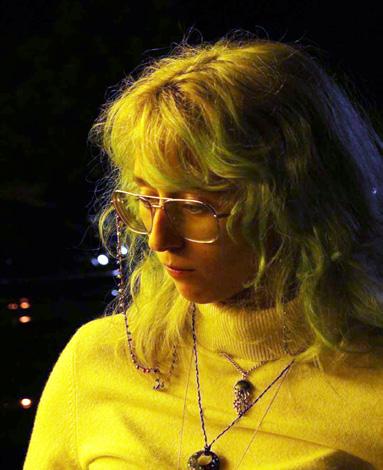
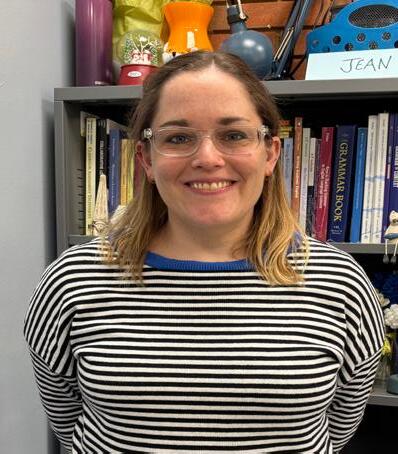

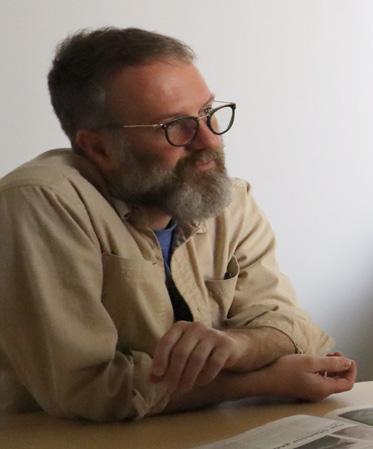
Scan the QR codes below or above the photo snapshots to read about the various faces of Meramec from this year.

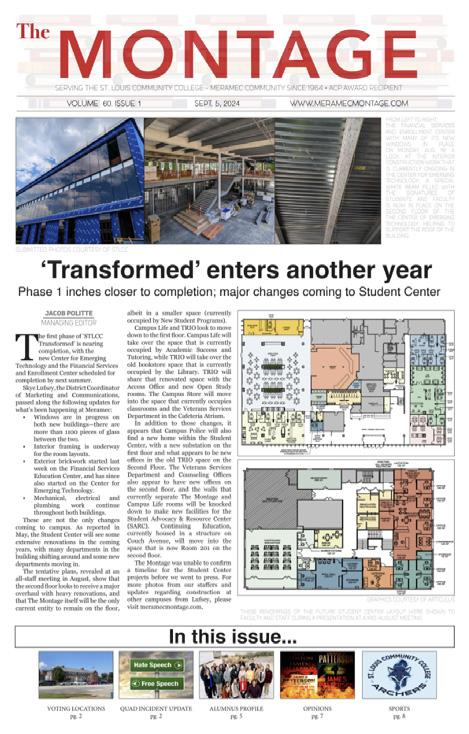
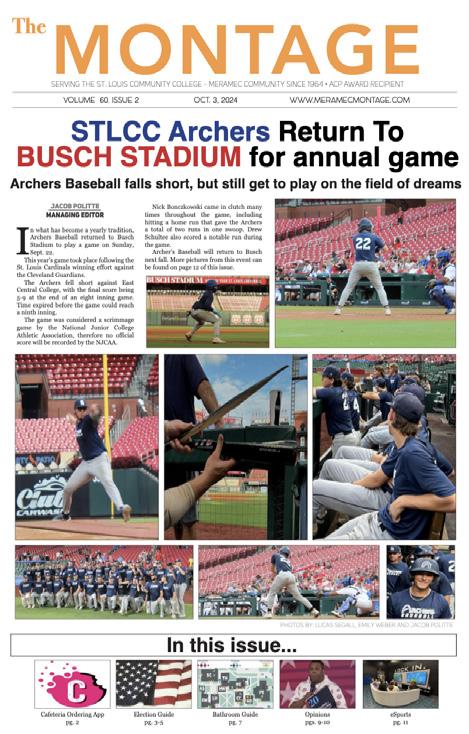
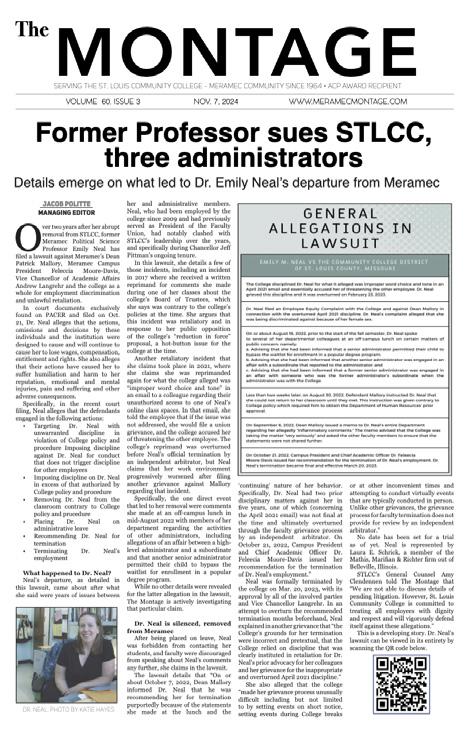
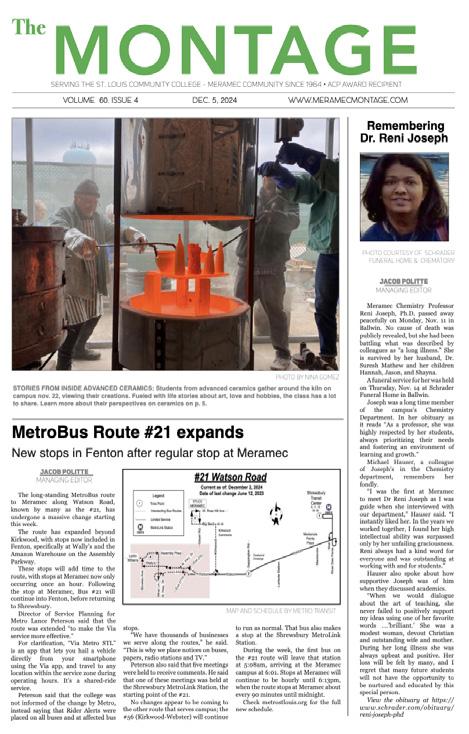
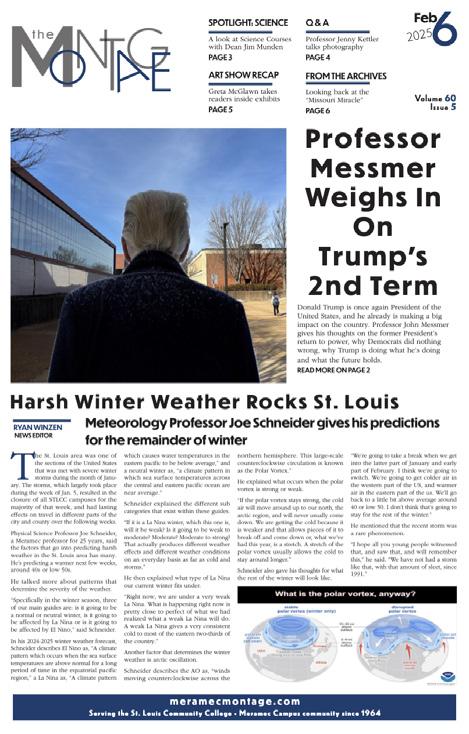
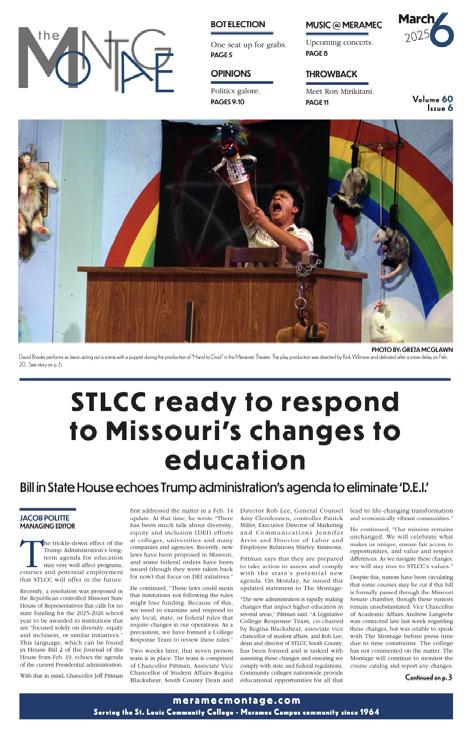



Now hiring editors, writers, photographers and graphic designers. To apply, contact Faculty Adviser Shannon Philpott-Sanders at ssanders147@stlcc.edu.
The Montage staff meets on Tuesdays via Zoom and in the Newsroom.